Thwarting the cyber criminals
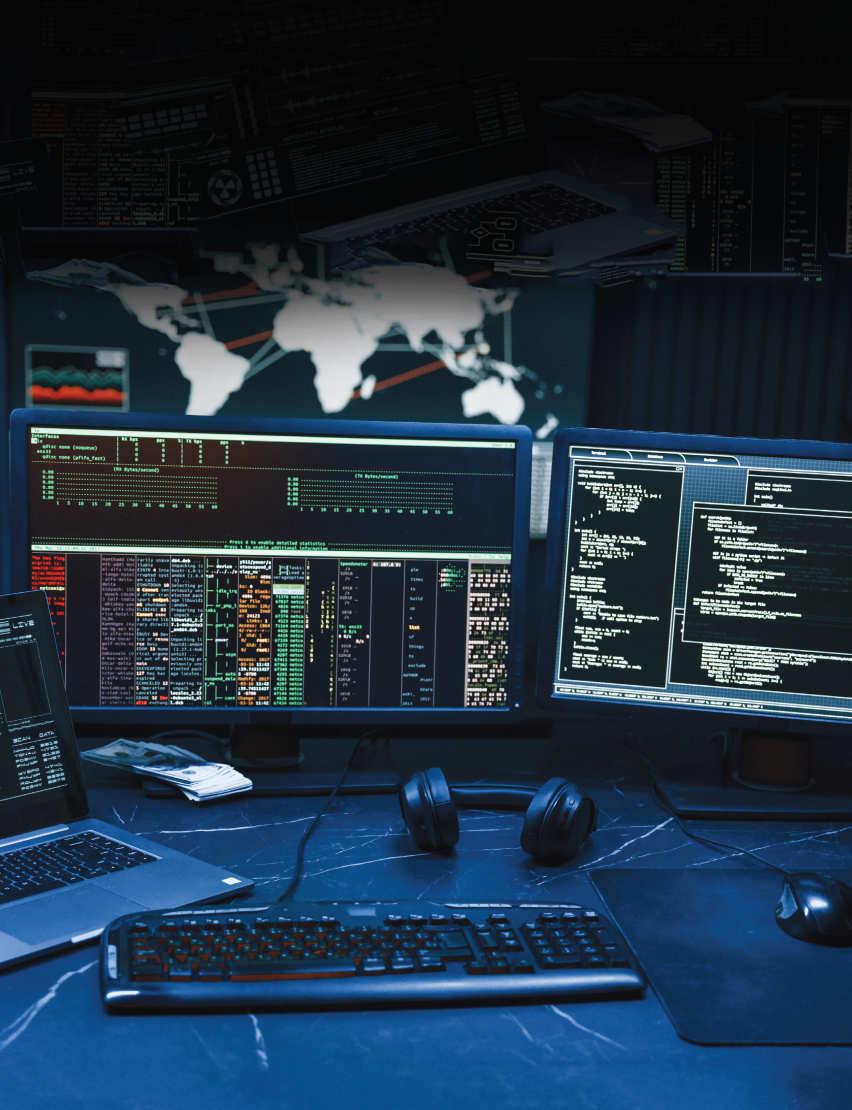
Aramco goes for growth
Financing the energy transition

Subsea technology innovations
Restructuring training
Valves for hydrogen applications
Prospects for the bunker market
Serving the regional oil & gas sector since 1997 26

VOLUME 26 | ISSUE 3 2023 www.oilreview.me
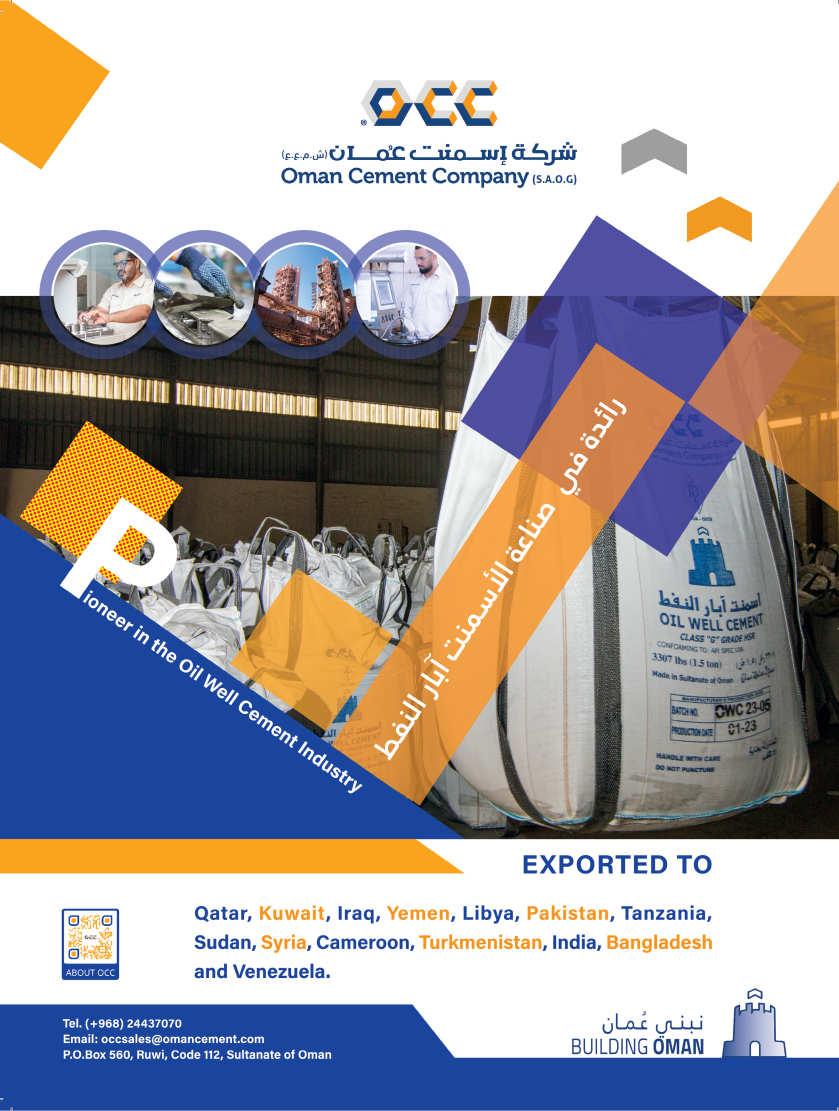
Serving the world of business
Editor: Louise Waters - louise.waters@alaincharles.com
Editorial and Design team: Prashanth AP, Fyna Ashwath, Miriam Brtkova, Praveen CP, Robert Daniels, Shivani Dhruv, Matthew Hayhoe, Leah Kelly, Rahul Puthenveedu, Madhuri Ramesh, Madhurima Sengupta and Minhaj Zia
Publisher: Nick Fordham
Head of Sales: Vinay Nair
vinay.nair@alaincharles.com
Magazine Sales Manager: Tanmay Mishra
+91 98800 75908
tanmay.mishra@alaincharles.com
International Representatives
Nigeria Bola Olowo
+234 8034349299
bola.olowo@alaincharles.com
USA Michael Tomashefsky
+1 203 226 2882 +1 203 226 7447
michael.tomashefsky@alaincharles.com
Head Office:
Alain Charles Publishing Ltd University House, 11-13 Lower Grosvenor Place, London, SW1W 0EX, United Kingdom
+44 (0) 20 7834 7676 +44 (0) 20 7973 0076
Middle East Regional Office: Alain Charles Middle East FZ-LLC Office L2-112, Loft Office 2, Entrance B, P.O. Box 502207, Dubai Media City, UAE
+971 4 448 9260, +971 4 448 9261
Production: Rinta Denil, Ranjith Ekambaram Eugenia Nelly Mendes and Infant Prakash
production@alaincharles.com
Subscriptions: circulation@alaincharles.com
Chairman: Derek Fordham
Printed by: Buxton Press
Printed in: April 2023
© Oil Review Middle East ISSN: 1464-9314
Editor’s note
WITH THE DEMAND for oil and gas unlikely to fall off any time soon, Middle East operators are pushing ahead with major developments, while at the same time exploring new energy alternatives. Kuwait’s oil and gas sector continues to offer a rich stream of work for foreign companies (p16), and Aramco is steaming ahead with the biggest capex programme in its history (p26).
Cybersecurity is a growing threat for oil and gas companies, with the energy sector seeing record cyber breaches in 2022, and the Middle East has witnessed a surge in cyber attacks in critical sectors. How can energy companies stay one step ahead of the cyber criminals? See our feature on p34, where two cyber experts discuss the current threat landscape and how companies can counter the cyber threat.
We also look at financing the energy transition (p22); challenges and opportunities for the refining and petrochemicals sector (p19); a centralised digital APM system (p38); and valves for hydrogen applications (p32).
Contents
Calendar
4 Executives’ calendar Listings of regional and international events, and a preview of OTC
News
8 Developments
A round-up of the latest news from around the region and beyond
Kuwait Review
16 Playing the long game: Kuwait's energy investment drive Kuwait’s oil and gas production continues to play a steadying hand in global markets as the nation begins to explore new energy alternatives
Refining & Petrochemicals
19 Capitalising on transformation Prospects for the GCC downstream industry and takeaways from the GDA International Downstream Conference & Exhibition
21 Taking the most adapted route(s)
How the Middle East downstream industry can ensure continued growth
Training
23 Restructuring training schemes for energy evolution
How training initiatives have to be reshaped to match the evolving industry
Aramco Review
26 Going for sustainable growth
Aramco is riding high, having recorded its largest ever profits and embarking on the biggest capital spending programme in its history
Valves
30 Demonstrating a commitment to localisation
The launch of new facilities to manufacture critical commodities such as valves
32 Valves for hydrogen applications
Valves and actuators have a key role to play in new hydrogen developments
Cybersecurity
34 Countering cyber threats for oil and energy companies
The latest developments and trends in cybersecurity in the Middle East
Digitalisation
38 The benefits of a centralised digital APM system
How leveraging Bentley Systems’ AssetWise APM to digitise workflows benefited OQ Upstream
Subsea Technology
40 Innovations
The latest subsea technology launches and product developments
Innovations
42 Recent product advances in oil and gas
Arabic
4 Analysis
Front cover image: Adobe Stock
Back cover image: Adobe Stock
email: orme@alaincharles.com
www.oilreview.me
Issue 3 2023 oilreview.me 3
Executives’ Calendar, 2023
Readers should verify dates and location with sponsoring organisations, as this information is

Reshaping the energy industry: action for transition
THE OMC MED Energy Conference & Exhibition takes place from 23-25 May in Ravenna, Italy. With a near 30-year history, OMC has grown to become the premier industry gathering in the Mediterranean region and has helped hundreds of companies achieve growth and success through high level networking, B2B matchmaking and the assessment of the latest drivers impacting the sector.
From operators and suppliers, policy makers and international companies as well as new start-ups, OMC brings the energy industry to one place to meet and do business. 350 exhibiting companies from 25 countries will showcase their latest solutions and innovations at the event.
After rethinking energy, leveraging alliances as a major driver to achieve a sustainable energy future, it is now time to translate ideas into practical and viable solutions.
Sustainable and equitable economic growth for the energy transition calls for new business models to be adopted by the industry globally, taking advantage of crosssector partnerships.
OMC is the place to be for energy authorities, industry CEOs, contractors, institutions and consumers to find out how the Mediterranean energy scenario is evolving after COP26 and COP27 and discuss the best strategies, policies and finance to accomplish the energy transition agenda.
The outcomes of COP27 in the run-up to COP28, opportunities arising from Eastern
Mediterranean integration, the alliance amongst industry sectors to accelerate energy transition, the energy vectors of the future, partnerships between producers and the hard to abate manufacturing industry, decarbonisation and security of supply are just some of the issues OMC strategic panels will tackle.
Technical and poster presentations will offer insights and knowledge transfer in each technical stream: Operational Excellence, Carbon Neutrality, Circular Economy and Technology, providing attendees with a platform to share experiences and know-how.
The call of COP27 aims at transforming innovation into applied solutions for the global
energy landscape and the new needs emerging around the world. To facilitate this, solution providers, startups and SMEs will be brought together to address challenges that span across the energy industry and business through the Innovation Room. This special area is dedicated to young professionals, university researchers, start-ups and students, giving them all the opportunity to present and compare their perspectives, develop ideas and turn them into projects, and devise solutions for real world energy challenges.
For further information, visit the website at www.omc.it/en/
Calendar 2023
4 oilreview.me Issue 3 2023
OMC 2023 takes place in Ravenna, Italy.
Image Credit : Adobe Stock
MAY 1-4 Offshore Technology Conference HOUSTON 2023.otcnet.org 16-17 OWI MENA ABU DHABI www.offsnet.com/owi-mena 16-18 ME-TECH DUBAI https://europetro.com/metech 23-25 OMC Med Energy Conference & Exhibition RAVENNA www.omc.it.en 30-1 June AIEN International Energy Summit MIAMI www.aien.org SEPTEMBER 5-8 Gastech SINGAPORE www.gastechevent.com 5-8 Offshore Europe ABERDEEN www.offshore-europe.com OCTOBER 2-5 ADIPEC ABU DHABI www.adipec.com 24-25 MENA HSE Forum DUBAI www.hse-forum.com NOVEMBER 27-28 LEWAS Awards 2023 AL KHOBAR www.lewa-symposium.org
sometimes subject
to change.

OTC is the world’s foremost event for the development of offshore resources.
Accelerating the energy transition
THE OFFSHORE TECHNOLOGY

Conference (OTC) is the world’s foremost event for the development of offshore resources, showcasing leading-edge technology for offshore drilling, exploration, production, and environmental protection.
OTC connects offshore energy professionals to collaborate and discuss the challenges, solutions, and changing energy landscape of the offshore energy sector. It is sponsored by 13 industry organisations and societies, who work cooperatively to develop the technical programme. Last year’s event attracted more than 24,000 energy professionals from 93 countries, with more than 1,000 companies from 39 countries showcasing their products and services. The technical conference featured more than 300 presentations covering topics from wellbore to topsides and everything in between.
OTC’s large international participation provides excellent opportunities for global sharing of technology, expertise, products, and best practices. Across four days, industry thought leaders, investors, buyers, and
entrepreneurs will meet to develop business partnerships and drive the conversations, collaborations and connections that support the future of offshore energy to achieve a lower-carbon industry.
Progressing towards a lowercarbon future
As the drive towards sustainability, emissions reduction and decarbonisation continues to gain ground, OTC is committed to supporting the offshore energy sector make progress towards efficiency and a lower carbon future.
At OTC 2023, the Energy Transition Pavilion will showcase providers of innovative and creative solutions being developed to decarbonise, drive sustainability and improve energy efficiency, providing a meeting place for energy transition dialogue.
OTC supports all offshore energy resources that help power human progress and meet global energy demands. Whether the topic relates to offshore wind, renewables, carbon capture, or energy transition, OTC has a technical session where energy professionals are exchanging ideas, concepts, and opinions to further advance scientific and technical knowledge of offshore resources.
An energy transition panel will provide a detailed outlook on the opportunities and challenges involved in the path to clean energy. Moderated by Kenneth B Medlock III, PhD, senior director Center for Energy Studies, the panel will comprise Justin Ahn, sustainability programme manager, Port Houston, Guillermo Sierra, vice president Energy Transition, Nabors and Kathryn Hite de Sousa, marketing director SLB. n
For further information see the website at https://2023.otcnet.org/
Celebrating 50 years since its establishment in 1969, OTC 2023 will be held from 1-4 May at NRG Park in Houston.
OTC 2023 6 oilreview.me Issue 3 2023
OTC is committed to supporting the offshore energy sector make progress towards efficiency and a lower carbon future.”
Image Credit : Adobe Stock

Upstream FID set to increase this year
UPSTREAM OIL AND gas financial investment decisions (FID) will likely increase this year, according to a new analysis from Wood Mackenzie, with up to US$185bn of investment committed to developing 27bn barrels of equivalent (boe), “Achieving FID on oil and gas projects is harder than it used to be, but with fewer sanctioned in 2022 than was expected, we believe we will see a slight uptick in activity this year, with over 30 of the 40 most viable projects likely to reach this milestone,” said Fraser McKay, vice president, head of Upstream Analysis for Wood Mackenzie. “Most operators will remain disciplined, and carbon mitigation will remain a key part of many FID projects.”
ADNOC LOGISTICS & SERVICES (ADNOC L&S) has unveiled its Integrated Logistics Services Platform (ILSP), which enables coordinated end-to-end management of logistics and maritime operations at its base in Mussafah, Abu Dhabi.
2023 pre-FID and sanctioned projects by resource.

National oil companies (NOCs) will control the largest investment opportunities this year, taking advantage of huge, discovered resources, while boasting the lowest unit costs. The average unit development cost of US$7/boe in 2023 is down slightly from 2022.
“International oil companies (IOCs) will be focusing largely on higher-cost but higher-return deepwater developments,” said McKay. “All will be acutely aware of how oil and gas project sanctions are playing out in the public domain and the scrutiny to which their associated emissions will be subject.”
In 2023 projects will require an average of US$49/barrel of crude (bbl) to generate a breakeven 15% internal rate of return (IRR). However, a weighted average IRR of 19%, at US$60/bbl, would be the lowest level since 2018. Rapid paybacks will be a key economic indicator as well, with the average for this year’s projects at nine years.
“Short-cycle and small-scale offshore projects will outperform in terms of both paybacks and returns,” said Greg Roddick, principal analyst of Upstream Research. “Long-life LNG projects are compromised when it comes to IRRs, but their attractive and stable future cash flows will be strategically important.”
“Advantaged deepwater oil and shelf projects will outperform on emissions, but LNG, sour gas and some onshore projects require mitigation measures,” added Roddick.

Asset productivity programmes for equipment maintenance face cost and talent challenges
45% OF ENERGY and oil & gas companies have seen above-inflation increases in maintenance costs, according to research from McKinsey, which surveyed senior leaders in APAC, EMEA and North and South America in the energy, oil and gas and advanced industry sectors. Recruitment of new, qualified talent is also problematic, with 73% of respondents acknowledging the challenge of sourcing new labour.
For energy and oil & gas respondents, critical assets and a technical workforce are at the core of their operations. The insights highlight opportunities for improvement that can guide organisations, with preventative maintenance, cost management excellence, and people, presenting as the strongest areas for growth.
Sergio Farioli, partner at McKinsey, said, “For organisations to navigate surging energy prices and unpredictable supply chains with efficiency and high ROI, they should refocus their attention on preventative actions, a systematic approach to skills, and excellence in cost control.”
Proper planning of preventative maintenance, upskilling workforces, implementing knowledgesharing systems between technicians and adopting a more sophisticated approach to cost control are among the steps recommended to improve asset productivity.
As part of the launch of the ILSP project, one of the largest turnkey offshore logistics offerings in the world, ADNOC L&S signed a US$2.6bn (AED9.5bn) contract with ADNOC Offshore to provide integrated logistics services. The agreement runs for five years, with the option of a five-year extension, and includes the provision of port services, warehouse operations, heavy lifting, material handling and shipping, rig and barge moves, marine terminal operations and waste management services.

Captain Abdulkareem Al Masabi, CEO of ADNOC L&S, said, “We are very pleased to extend our decades’ long collaboration with ADNOC Offshore as we unveil our ILSP and continue to revolutionise offshore oil and gas logistics. The ILSP is a unique offering that centralises all logistics requirements for our customers through a single interface, optimising efficiencies and reducing logistics costs. As we deliver on our ambitious growth strategy, we continue to unlock greater value both for our customers and ADNOC L&S, and reinforce ADNOC L&S’ position as the region’s largest shipping and integrated logistics company and global maritime energy logistics leader.”
ADNOC L&S created the ILSP as part of its ongoing commitment to support the continued growth of the region’s energy sector. By managing all logistics requirements through one system, ILSP can reduce project logistics costs, with customers being invoiced in a unique, costper-ton format, moving away from the standard asset lease model.
ADNOC L&S launches Integrated Logistics Services Platform
News
ADNOC L&S created the ILSP as part of its ongoing commitment to support the continued growth of the region’s energy sector.
8 oilreview.me Issue 3 2023
The oil and gas industry is facing cost and labour challenges.
Image credit: Wood Mackenzie Image credit: ADNOC
Image credit: Adobe Stock
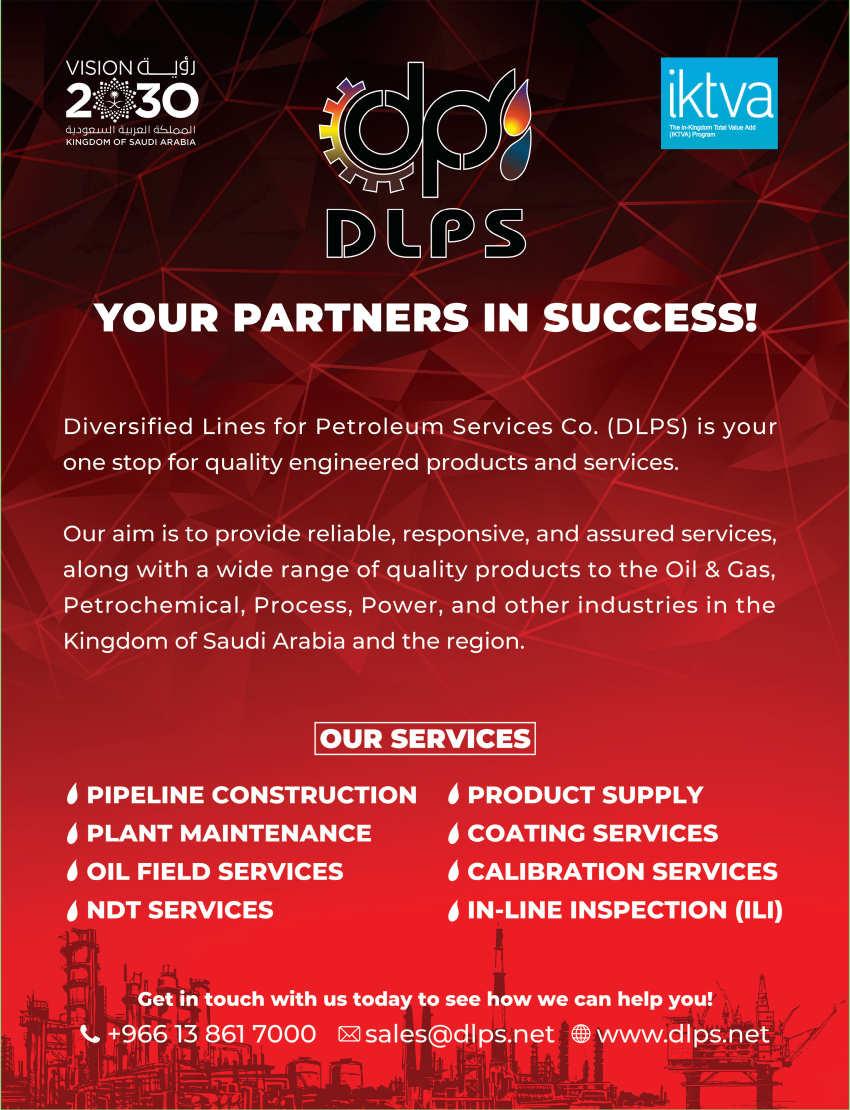
Tadweer and OMV collaborate for sustainable feedstocks
THE ABU DHABI Waste Management Company (Tadweer), and OMV, a leading international, integrated oil and gas company, have signed a Memorandum of Understanding (MoU) to explore joint opportunities in the areas of sustainable feedstocks for fuels and chemicals production.
The MoU aims to establish a partnership between the two parties to leverage both companies' expertise and resources to identify and develop sustainable and innovative solutions that support the conversion of waste to an asset.
The agreement represents a significant step in the companies' efforts to advance sustainability and address global environmental challenges. The parties will work together to evaluate the potential for new projects and initiatives that support the development of sustainable feedstocks, including the use of waste as a feedstock for the production of sustainable fuels and chemicals.
This collaboration will help to promote the development of a circular economy in the UAE, where waste is seen as a valuable resource rather than a challenge.

Honeywell to open regional manufacturing centre at SPARK
HONEYWELL IS TO open an advanced regional manufacturing centre at the King Salman Energy Park (SPARK), Saudi Arabia’s new energy industrial zone. The facility will include engineering, manufacturing and assembly lines spanning Honeywell’s industrial automation and control equipment, field instruments, rugged mobile computers, gas detection equipment, fire safety systems and building management systems hardware. Additional capacity for potential future manufacturing expansion, as well as customer demonstration facilities, is also planned.
The new facility will be developed in phases, with Phase One expected to be completed in 2024. Honeywell broke the ground for the facility at a ceremony attended by a delegation of global and regional Honeywell executives including Vimal Kapur, president and chief operating officer; John Waldron, senior vice president and chief commercial officer; Ben Driggs, president Global High Growth Regions; and Mohammed Mohaisen, president and CEO, Honeywell Middle East and North Africa, as well as senior leaders from SPARK and Aramco.
Fugro announces UAE-flagged uncrewed surface vessel
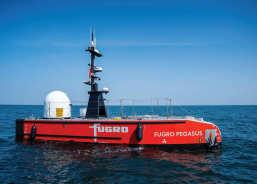
FUGRO, A LEADING geo-data provider has announced that the 12 m Blue Essence uncrewed surface vessel (USV), the Fugro Pegasus, has received full navigation licensing from the UAE Ministry of Energy & Infrastructure. This is the first registration of an overthe-horizon USV in the country, making the Fugro Blue Essence USV the first vessel in its class to meet multiple independent maritime authorities' operational standards.
The Blue Essence vessel, built by Fugro’s partner SEA-KIT International, can be controlled from anywhere in the world and designed for inspecting subsea assets. The Remote Inspection Solution incorporates the Blue Volta e-ROV, that extends the inspection portfolio up to 400m water depth.
Blue Essence allows experts to deliver projects from Fugro's onshore remote operations centres (ROCs) safely out of harm's way while experiencing a better work-life balance. Its advanced systems, and an array of geophysical sensors, allow subsea inspection asset and site characterisation surveys, enabling the Fugro Blue Essence vessel to conduct operations safely and efficiently, reducing emissions by 95% versus conventional vessel operations.
ADNOC Drilling secures US$412mn IDS contract
ADNOC DRILLING HAS confirmed the award of a five-year contract for the provision of Integrated Drilling Services (IDS), totalling US$412mn from ADNOC Offshore, commencing in the second quarter of 2023.
The company will provide IDS for the development of the Upper Zakum field, the largest producing field in ADNOC’s offshore portfolio. The application of the services provided by ADNOC Drilling will add to the efficiency of production at the project, deliver cost savings, and contribute to ADNOC’s plans to responsibly accelerate production capacity growth as global demand for energy continues to increase.
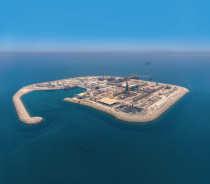
Abdulrahman Abdullah Al Seiari, chief executive officer of ADNOC Drilling, commented, “We are very pleased to have been awarded this important contract, which will contribute to the effective development of the Upper Zakum field and enable ADNOC to realise accelerated production capacity targets to responsibly supply energy to a world which sees continuously rising demand.
“This contract award further demonstrates the delivery of our strategic objective to expand our Oilfield Services (OFS) business as we continue to work towards our goal of further doubling OFS revenues by 2025. This contract alone will add some 20% to our annual revenue compared with 2022. Our comprehensive market-leading drilling and completion services offering improves operational performance and efficiency, delivering considerable cost savings and reductions in well delivery times for our customers.”
Previous IDS contract awards in 2022 include a US$1.3bn award for the Ghasha Mega-project, US$1.6bn award for integrated drilling fluid services, and a US$777mn award for wireline and perforation services.
News
Tadweer and OMV teams at the signing.
The Upper Zakum field.
10 oilreview.me Issue 3 2023 Image Credit: Tadweer and OMV Image Credit: ADNOC Drilling Image Credit: Fugro
The Fugro Pegasus
QatarEnergy and Sinopec sign agreement on largest LNG project

QATARENERGY HAS ANNOUNCED the signing of a definitive partnership agreement with China Petrochemical Corporation (Sinopec) for the North Field East (NFE) expansion project, the largest project in the history of the LNG industry.
The agreement was signed by Saad Sherida Al-Kaabi, the Minister of State for Energy Affairs, the President and CEO of QatarEnergy, and MA Yong-sheng, the chairman of Sinopec.
AVEVA and Petrofac collaborate on digital transformation
AVEVA HAS SIGNED a memorandum of understanding (MoU) with Petrofac.

The new agreement will see AVEVA cooperate with Petrofac towards digital transformation of the end-to-end supply chain system process, including engineering cataloging, procurement, site material control and construction planning.
It will be supporting the delivery of Petrofac’s net-zero targets using AVEVA’s sustainable engineering solutions. The plan includes, cooperation kick-off, design thinking sessions for new solutions and use cases, technical assessments, an execution strategy and more.
The MoU will support Petrofac’s net zero targets with AVEVA’s
George Eapen, Group CIO, Petrofac said, “Petrofac and AVEVA have a long-standing relationship and we are very happy to partner with them to build on to our multi-year digital transformation strategy. As part of our agreement, we will build digital capabilities internally and for our customers that are aligned to Petrofac’s environmental, social and governance (ESG) and sustainability agendas.”
Halliburton Labs launches new brands in clean energy accelerator
The agreement marks the entry of Sinopec as a shareholder in one of the NFE joint venture companies that own the NFE project, one of the most critical projects in the global LNG industry.
Pursuant to the terms of the agreement, QatarEnergy will transfer to Sinopec a 5% interest in the equivalent of one NFE train with a capacity of 8mn tons per annum (MTPA). This agreement will not affect the participating interests of any of the other shareholders.
Speaking at the signing ceremony, AlKaabi said, “The People’s Republic of China is a major driver of the global energy markets as well as being one of the most important gas markets in the world and is a key market for Qatari energy products. Today’s event underscores QatarEnergy’s commitment to deepening its relationships with key LNG consumers, while prioritising long-term strategic partnerships and alignment with world class partners from China, represented by Sinopec here today.”
Noting the November 2022 agreement to supply Sinopec with 4 MTPA of LNG from the NFE project, he said, “That agreement was not only the first NFE LNG supply agreement to be announced, but also the longest LNG supply agreement in the history of the industry. Today, Sinopec will join Qatar’s LNG family becoming the first Asian shareholder in the NFE project.”
This agreement follows last year’s series of partnership announcements in the US$28.75bn NFE project, which will raise Qatar’s LNG export capacity from the current 77 MTPA to 110 MTPA.
HALLIBURTON LABS HAS introduced FuelX, LiNa Energy, and Solaires Entreprises as the newest participants in its clean energy accelerator. The companies will join a collaborative ecosystem that includes industrial capabilities, technical expertise, and global network connections to scale their respective businesses.
The move is part of Halliburton Labs’ ambition to advance clean energy innovation. Halliburton Labs helps early-stage companies achieve commercialisation milestones with supportive resources that expand customer and investor prospects to enable growth.
“We’re excited to support FuelX, LiNa Energy, and Solaires with the tools they need to achieve their goals,” said Halliburton Labs managing director Dale Winger. “Each participant company receives customised support to enable efficient use of their time and capital by engaging Halliburton’s scaling experience and capabilities.”
FuelX manufactures hydrogen storage materials and fuel cell power systems to accelerate the decarbonisation of ‘things that move’.LiNa Energy develops and provides low-cost, solid-state sodium batteries, while Solaires Entreprises develops next-generation solar cells.
Iraq and TotalEnergies agree terms for GGIP
IRAQ HAS AGREED to take a 30% stake in TotalEnergies US$27bn Gas Growth Integrated Project (GGIP), reviving a deal that has been beset with delays.

Iraq’s agreement to lower its share to 30% from 40% in the project, which aims at developing Iraq’s natural gas resources, is reported to have addressed a key stumbling block for the project, as TotalEnergies is said to have wanted a majority stake.
The Iraq Government and TotalEnergies have agreed on a 30% stake for the Basrah Oil Company (BOC) in the GGIP. Furthermore, in agreement with the Iraqi Government, TotalEnergies has invited QatarEnergy to take a 25% stake in the GGIP.
The consortium will thus be composed of TotalEnergies (45%), Basrah Oil Company (30%) and QatarEnergy (25%).
In a statement, TotalEnergies said it “welcomes the continuity of the voice of the State of Iraq on this Development & Production Contract, which is a strong and positive signal for foreign investment in the country.”
Signed in September 2021, the GGIP’s main purpose is to enhance the development of Iraq’s natural resources to improve the country’s electricity supply.
News
The deal marks the entry of Sinopec as a shareholder in one of the NFE JV companies.
engineering solutions.
The project will include the recovery of flared gas for supply to power generation plants.
Issue 3 2023 oilreview.me 11 Image credit: QatarEnergy Image credit: AVEVA
Image credit: Adobe Stock
Hydrogen pipelines materialising in Europe: Rystad Energy
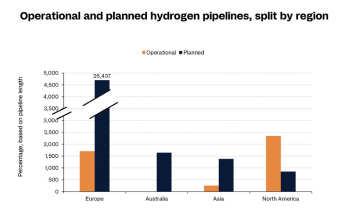
NEW HYDROGEN INFRASTRUCTURE
is starting to materialise as the world seeks to accelerate its path to net zero, according to new analysis from Rystad Energy. There are very few shortcuts to a sustainable future, and simply switching existing oil and gas infrastructure to hydrogen is not always viable.
Hydrogen has a high gravimetric energy density and a low volumetric energy density. This means that hydrogen pipelines will be far better than vessels at moving hydrogen over short to medium range distances.
Today, over 4,300 km already exists for hydrogen transportation with over 90% located in Europe and North America. Rystad Energy estimates that there are around 91 planned pipeline projects in the world, totalling 30,300 km and due to come online by around 2035.
In cases where hydrogen will be shipped (as hydrogen or its derivatives), it will eventually be distributed on land using hydrogen pipelines, which makes transport via pipelines a critical transportation mode for the gas. Hydrogen pipelines are already used to supply industrial hubs (at petrochemical plants for example). As supply scales up and moves from areas with abundant and renewable energy to demand centres, long transmission lines will be a necessity and these pipelines would require larger diameters and higher pressure for cost effectiveness and consequently higher steel grades.
Globally, Europe is at the forefront of efforts to produce and import green hydrogen, and its attention is now turning to building the necessary infrastructure to get it to demand centres. According to Rystad Energy research, Spain, France, and Germany are among the countries committed or considering cross border pipelines to facilitate energy flows, while the UK with its extensive gas grid finds itself in a good position to switch from natural gas to hydrogen.
“The steady increase in pipeline projects for hydrogen is an early sign that the energy transition is gathering pace. Europe, with its extensive gas grid is well placed to make the jump. Switching infrastructure from gas to hydrogen is possible and cost effective. But the greatest barrier is not financial, but the physical properties of hydrogen itself, which differ substantially from oil and gas," said Lein Mann Bergsmark, senior analyst, hydrogen.
Pace of energy transition a concern - WEC survey
WORLD ENERGY COUNCIL’S latest Pulse Survey, reflecting the views of more than 700 leaders of the global energy community, shows that two thirds continue to be concerned by the pace of energy transitions, nearly double who expressed similar concerns in the Council’s April 2022 study. Leaders are particularly concerned that insufficient action is being driven from the bottom up, with 35% of respondents stating that individuals and communities should be empowered to lead transformations. 43% see challenges around 'affordability and modern energy access’ as the most concerning aspects of ensuring a fair energy system.
Dr. Angela Wilkinson, secretary general, and CEO, World Energy Council, said,

“Three once-in-a-lifetime crises – Covid, climate, conflict – have revealed the importance and fragility of energy systems and reminded us all to manage the energy trilemma of security, affordability, and sustainability to avoid new shocks and crisis.
“The results of our World Energy Pulse Survey show that regional priorities differ and the majority agree that the world energy system is no longer fit for purpose. Energy transition leaders are concerned we are moving too slowly and the best way forward is to involve more people, diverse communities and sectors in making fairer and more far reaching energy transitions happen.
“Bridging climate, energy and human security interests in a fragmented and polarised world not easy, but it is essential to remember energy systems include people, and it is important to pull world energy society together across geographies, technologies, sectors and generations with the shared intent to redesign diverse and resilient energy systems for billions of better lives and a healthy planet.”
records
CEDIGAZ, THE INTERNATIONAL Center for Natural Gas Information, has just released its annual report on the global biomethane market. According to the report, titled "GLOBAL BIOMETHANE MARKET 2023 ASSESSMENT - From ambition to action", the global biomethane industry experienced a 23% growth in 2022, with production increasing from 6bn cubic metres in 2021 to 7.4bn cubic metres in 2022. The market is poised for significant expansion over the next decade, with the potential to surpass 100bn cubic meters by 2030 if appropriate policies and regulations are implemented.
The report highlights that biomethane has become a crucial component of global energy and climate policies, with three major drivers propelling the sector to new heights: energy security concerns due to Russia's war against Ukraine and the global energy crisis; the urgency to address climate change; and a focus on methane emissions reduction. The report notes that new incentivising policies, such as the REPowerEU plan in Europe, the Inflation Reduction Act in the US, the Metano Zero plan in Brazil, and the recently announced GOBAR-Dhan scheme in India, are stimulating investment in the RNG sector.
The transportation sector represented half of the global demand growth in 2021, with biomethane being adopted by cities, corporations, industrial users, and fleet owners to decarbonise hard-to-electrify sectors, move towards a circular economy, and respond to ESG concerns. The report notes that European and North American energy utilities are investing heavily in biomethane to support decarbonisation policies and clean energy supplies. New applications, such as the use of biomethane to produce clean hydrogen, are emerging.
The report also highlights unprecedented investment in the biomethane sector.
European energy majors led the way with BP, Shell, and TotalEnergies acquiring US Archaea (US$4.1 bn), Danish Nature Energy (US$2bn), and Poland’s Polska Grupa Biogazowa, respectively. Financial investors, such as US funds and asset managers, were also active, creating dedicated biomethane business units. These investments underscore the recognition of biomethane's attributes, exponential growth, and status as a key decarbonisation method for the future.
Europe leads global biomethane production, and the USA is set for explosive growth in the RNG sector. China, India and Brazil also have big ambitions.
Biomethane industry
strong growth
Energy Transition News 12 oilreview.me Issue 3 2023
Image credit: Rystad Energy Hydrogen Solution

Leading in offshore safety
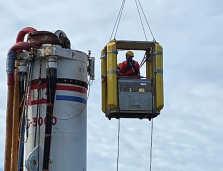

Reflex Marine’s award-winning work basket has completed 100 projects.
REFLEX MARINE’S STORM-WORK suspended work basket was successfully employed in its 100th offshore project in October 2020. The STORM-WORK was designed specifically for offshore industrial work activities and was very well received by offshore operators across industries – heavy-lift, decommissioning, oil & gas, and offshore wind. ConocoPhillips in Australia is using the customised enlarged version of STORMWORK while the standard units have been employed in multiple projects throughout Europe, among others, with Seaway7.
The design, safeguarding both the workers inside the basket and the assets worked on thanks to the soft-touch features and contoured shape, is praised by users worldwide. The small footprint and light weight allow for improved manoeuvring, while the highly durable, low-maintenance materials used ensure long unit lifespan.
“The unit is excellent for accessing areas with obstacles and tight landing spaces,” comments a STORM-WORK user from Boskalis.
Reflex Marine’s innovative work basket design has been recognised by industrial engineering body LEEA with an award in the Safety category confirming the outstanding crew protection features and safety benefits. STORM-WORK is available for purchase and hire and can be customised to meet the required size and capacity. n
Report points to importance of raising awareness of safety around AI
A NEW REPORT from Lloyd’s Register (LR) and maritime innovation consultancy Thetius advocates investment to improve the understanding of AI at all levels within maritime organisations, and outlines the value of including AI and Autonomy at board level, alongside workforce education and training to raise awareness of safety and regulations of advanced technology.
Titled ‘Out of the Box’, the joint study assesses autonomy and assurance of artificial intelligence in the maritime industry, with both markets currently estimated to be worth a joint US$3.7bn in 2023, a 57% increase from 2022. The report projects that the AI-driven systems and vessel autonomy market will be worth a combined US$5bn by 2028, with significant growth and crossover of both sectors expected.
With digital solutions presenting challenges due to rapidly evolving technologies, such as AI-driven autonomous systems onboard modern vessels, the report calls for clarity around normal and emergency use cases, pointing to the need for traditional assurance measures to become increasingly integrated.The report adds that as the industry moves forward, it is essential that the performance of these systems is thoroughly examined to ensure safety remains a priority regardless of rapid innovations. It recommends that technology should be appropriate to user risks, and calls for the creation of an independent cross-industry body to support the safe development of artificial intelligence for maritime organisations.
The Reflex Marine STORM-WORK suspended work basket has been recognised by the LEEA with a safety award.
Marine Safety 14 oilreview.me Issue 3 2023
The unit is excellent for accessing areas with obstacles and tight landing spaces.”
Image Credit : Reflex Marine
Image Credit Reflex Marine
The work basket in action.

Playing the long game: Kuwait’s energy investment drive
OPEC MEMBER KUWAIT was producing around 2.8mn barrels per day (bpd) by the end of 2022, in line with its quota limits. The small Gulf state of just over four million people has long been a reliable and dependable producer, predominantly supplying Asian crude markets.
Despite red tape that has often thwarted foreign investment, delays in sanctioning new projects, and sometimes muddled decision-making amid political in-fighting, the country has nonetheless played a steadying role in global energy markets for many years.
Kuwait Petroleum Corporation (KPC) is the state-owned oil champion, with a network of subsidiaries that touch all strands of the nation’s vast and everevolving energy sector.

Some of its key operating subsidiaries include Kuwait Oil Company (KOC), Kuwait National Petroleum Company (KNPC), Petrochemicals Industry Company (PIC) and Kuwait Oil Tanker Company (KOTC).
While some foreign investment has found a way into Kuwait, together, these public companies continue to dominate the nation’s prized hydrocarbons sector, monetising the vast resources pool buried in the ground.
Oil reserves are estimated at more than 100bn barrels, according to OPEC, although additional discoveries are continually being found, including at Burgan, one of the world’s largest oilfields. The nation’s single most prized energy asset has, at peak times, produced as much as 2.4mn bpd, although this is now currently thought to be hovering around 1.6mn bpd.
Production growth
But growing upstream production has not always been easy in Kuwait, with various targets missed over the years, largely the result of political stalemate and bureaucracy. Hopes of raising production capacity to 4mn bpd in 2020 did not materialise, and the current objective is now to reach 3.5mn bpd in 2025. Another previous stated goal, declared in 2018, was to reach 4.75mn barrels by 2040. These expansion plans broadly match those of other Gulf producers which are similarly working hard to lift oil and gas output in response to global demand.
On top of its huge conventional oil, Kuwait is also looking to exploit its heavy oil reserves, including at the South Ratqa field in the north of the country, a part of another of the world’s largest oilfields, with estimated reserves of around 15bn barrels.
There are plans to incorporate the use of wind energy to power facilities across the oilfield, reflecting a wider trend across the region to embed sustainability where possible into new oil and gas projects.
While investment in the upstream sector has been challenging for foreign firms, it has provided a rich stream of work for leading engineers, consultants and constructors.
In January, Technip Energies of France was awarded a large five-year contract for project management consultancy work by KOC, estimated to be worth between € 250mn (US$274mn) and € 500mn (US$549mn). It marks the renewal of a previous five-year agreement awarded to Technip Energies in 2014, and covers frontend engineering design (FEED), project management, and associated services on KOC’s major projects.
Kuwait has been upgrading its refineries infrastructure.
Kuwait’s oil and gas production continues to play a steadying hand in global markets, as the nation begins to explore new energy alternatives to diversify and grow its economy away from hydrocarbon dependency.
Kuwait 16 oilreview.me Issue 3 2023
Growing upstream production has not always been easy in Kuwait.”
Image Credit : Adobe Stock

Value added
Again, as in other neighbouring states, this sustained investment in oil and gas for decades has resulted in a heavy dependency on the hydrocarbons sector. Oil still makes up nearly 90% of Kuwait’s revenues.
As part of efforts to add value to its crude exports, the country has been busy upgrading its refineries infrastructure, although these projects and ventures have also faced various delays.
The second unit of the flagship 615,000 bpd Al Zour refinery is now operational and supplying oil products to international buyers. The refinery made its first shipment of lowsulphur fuel oil to Singapore at the end of last year, with exports expected to ramp up further in the second half of 2023. This will help to make up for Russian shortfalls in Europe, as well as meet high demand in Asia.
Kuwait’s other refining projects include the Mina Abdullah and Ahmadi refineries. There are also plans to expand the nation’s petrochemicals industry, including building a hub around the Al Zour refinery, located some 90km south of Kuwait City.
PIC has laid out its own 2040 strategy that includes the expansion of its petrochemicals and fertilisers businesses. Major projects on the drawing board include the Olefins IV project, which is now being evaluated following an economic and technical feasibility study by consultancy firm, Advisian. The project, to set up a petrochemical complex to produce ethylene, polyethylene, ethylene glycol and other specialised products, is expected to start operations in 2028.
Local content
Kuwait’s Vision 2035 aims to diversify the economy further, and to transform the nation into a financial and commercial hub, whilst reducing the long reliance on oil. Developing local content is another major strategy, a theme that again chimes with other Gulf producing states.
Kuwait’s HOT Engineering And Construction Co recently landed a new contract for work in the Saudi-Kuwait neutral zone, an oil-producing area that straddles the border between the two countries. It involves supplying heavy construction equipment and expertise across a five-year period.
The neutral zone is another area where upstream activity is picking up.
Kuwait and Saudi Arabia recently signed a memorandum of understanding for the development of the joint Durra gas field. The project could produce 1bn cubic feet of gas and 84,000 barrels of liquefied gas per day, according to Kuwait’s state news agency.
Kuwaiti interests in the neutral zone are represented by the Kuwait Gulf Oil Company.
Gas production
Exploiting the country’s natural gas deposits
has become something of a priority, in part, to meet rising domestic energy needs. Despite sitting on vast gas reserves, the country is importing liquefied natural gas (LNG) from overseas to meet domestic demand, to the something embarrassment of the leadership.
Kuwait’s Al-Zour LNG import terminal, built by a South Korean team of Hyundai Engineering & Construction and Kogas, is thought to be among the largest storage and regasification facilities in the world, with eight storage tanks and with a 22m tons per year capacity. The first shipment of imported LNG was delivered by Qatargas in 2021. It means
investment in the country’s own gas fields and infrastructure has become urgent to offset these imports.
Some of the pressure is expected to be lifted by expanding renewables production, where Kuwait has also lagged behind some of its peers. Total renewable capacity represents just 0.3% of electricity production, far behind the UAE, the regional frontrunner. By 2030, Kuwait hopes to boost its renewable energy use to 15%, although whether this will be achievable may again hinge on more streamlined decision-making and even a greater dose of political cooperation. n
Sparrows Group wins work in Kuwait
Sparrows Group is carrying out work in Kuwait for the first time on multiple rigs at various sites.
SPARROWS GROUP, THE engineering and maintenance services specialist for the global energy and industrial sectors, has been awarded work in Kuwait for the first time.
The two scopes cover maintenance and provision of certificates of conformance for onshore rigs across sites for two clients. Sparrows will be responsible for servicing a range of critical drilling equipment, including mud pumps, iron roughnecks, catwalks and top drives to ensure the rigs are safe to return to the field.
With Kuwait’s oil and gas industry now reinvigorated, 100 rigs will join the operational fleet by Q3 2023. These rigs, both new and old, require high-quality servicing, which is a significant volume of work to place on existing OEMs. Sparrows has been recognised as an approved non-OEM maintenance provider, becoming the first non-OEM service company to hold the NOC approvals to operate in the country, and showcase its expertise and capabilities.
Sparrows’ highly-skilled staff are sharing knowledge and supervising the client’s domestic maintenance teams as they carry out their CAT IV inspections. The company has deployed a team including project managers, drilling equipment supervisors and drilling equipment technicians –including top drive, iron roughneck and BOP hoist specialists – with the numbers onsite increasing to support the growing workload.
On each rig, a quick turnaround of maintenance and servicing is required, with the country eager to kick-start its swelling oil and gas industry. Rigs require recertification every five years, which keeps the door open for Sparrows to remain operating in Kuwait for the foreseeable future.
Stewart Mitchell, chief executive officer at Sparrows, said, “Becoming the first and currently only company to hold the approval as a non-OEM maintenance provider in Kuwait is a proud honour and testament to Sparrows’ dedication and focus on quality. This is an exciting time for our drilling services portfolio as we expand globally, taking our remarkable success in the Middle East and Asia Pacific and replicating it in the UK and in previously inaccessible locations, such as Kuwait.”
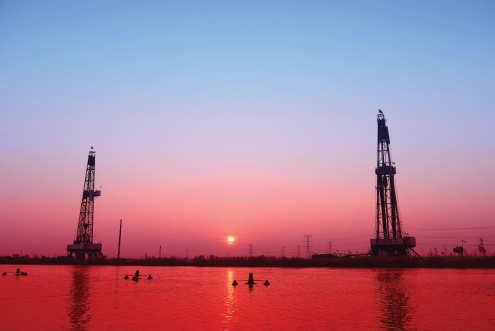
Kuwait 18 oilreview.me Issue 3 2023
Image Credit: Sparrows Group
Capitalising on transformation
Mohammad Al Shahrani, Secretary General – GDA and Head of Affiliates Manufacturing Excellence, General Manager, Saudi Aramco, discusses prospects for the GCC downstream industry and the main takeaways from the GDA International Downstream Conference & Exhibition 2023. The event was held from 13-15 February 2023 at the Exhibition World Bahrain, under the theme, ‘Downstream Turning Points – Capitalising on Transformation’.
How do you view the outlook for the refining and petrochemicals industry in the region in terms of growth prospects?
We understand that the refining and petrochemical industries are growing as per statistical and projection supply demand data, notwithstanding the GCC supply demand but looking further to the world energy supply demand disruption due to the stringent specification and environmental legislation that forced some refineries to slow down and even shut down completely. While the energy transformation is progressing worldwide for alternative energy sources such as wind, solar,
electric vehicles, biofuels etc., fossil fuel refineries will persist for the coming short and long-term period, and hence GCC countries’ strategies are continuing to invest and grow into integrated downstream refineries with petrochemical plants. The volatility of crude oil and products prices is having an effect on refinery margins. To improve these, refiners need to consider investment in upgrading low value petroleum products to more valuable products. The two main products that have negative crack spread compared to crude are naphtha and fuel oil, and hence to upgrade those two products values, those making new investments in the downstream sector should consider integrating crude oil refineries with petrochemical plants, and to also consider cracking the bottom of the barrel with Fuel Oil Residue Catalytic Crackers (RCC) or Delayed Cokers. We believe new investments in the GCC are looking heavily into integration of refineries with petrochemical plants and RCC as well.
This is becoming a mandatory requirement given the new stringent products quality legislation for gasoline and bunker fuel oil as per IMO 2020, and Environment Social Governance (ESG) requirements for decarbonisation.
What were some of the main themes and takeaways from the GDA conference?
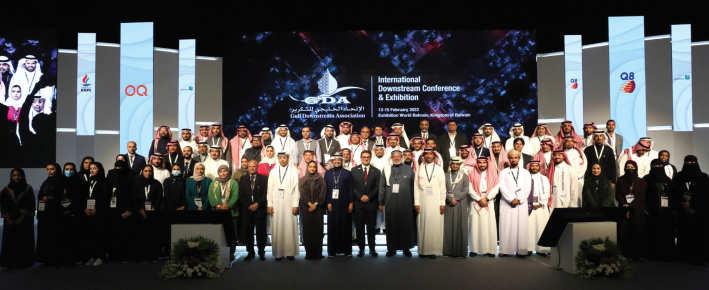
• Market requirements for energy demand need to be carefully addressed for downstream strategic investments, taking into consideration new technologies and digital transformation.
• Stringent specifications and decarbonisation requirements for energy products, as per Environment Social Governance ESG with respect to international regulations and legislation need to be addressed clearly to ensure those are taken into consideration with new downstream investments.
• Downstream business focus on
The volatility of crude oil and products prices is having an effect on refinery margins.”
Refining & Petrochemicals Issue 3 2023 oilreview.me 19
The GDA International Downstream Conference & Exhibition welcomed more than 3,630 participants across three technical-packed days.
Image Credit : GDA
commercialisation and end-to-end value chain optimisation is the new era consideration for business sustainability. • Alternative renewable fuels and non-fossil fuels for energy supply will continue to be developed, but are not showing a significant effect on downstream development for the short term.
To what extent are decarbonisation and sustainability an industry concern, and what measures are companies taking to improve the sustainability of their operations?
To control the climate change impact from the downstream industry while ensuring energy security, industry should aim to maximise energy produce while minimising emissions, using new process technologies for business sustainability and competitiveness.
GCC downstream are targeting zero carbon for GCC by 2050 and hence started looking forward to meeting customer needs and products specifications as per international regulatory legislation for products sustainability.

There is a need to standardise carbon recording performance across different sectors, where globally the regulators are putting pressure on manufacturers for Environmental, Social and Governance (ESG) and standards for carbon reporting such as the Global Reporting Initiative (GRI) and Task Force on Climate Related Financial Disclosure (TCFD).
How can digitalisation be harnessed to improve operations?
Currently, digital transformation is at the top of the agenda for all oil and gas industries to implement across the full range of the integrated business from feed to products, covering the end-to-end supply chain process for more efficiency and commercialisation of the downstream industry. With downstream complexity, it is important to look at the availability of Artificial Intelligence (AI) technology and upskilling of human resources to cope and navigate through the new digitised systems for maximum possible benefit to the business in commercialisation, optimisation and measurable and sustainable problem solving.
Cybersecurity is the most important IT objective to consider with all robust digitalisation transformation processes for the safety, sustainability and reliability of the business.
What role does the GDA play in driving the development of the downstream industry and providing a forum for the sharing of knowledge and best practices?
The GDA plays a vital role in networking, experience and best practice knowledge sharing through the International GDA conferences, GDA newsletters, GDA magazine and GDA Technical Committees.
The Technical Committees cover the following areas and provide a wide range of knowledge sharing and lesson-learned practices, connecting the teams and members with specialty Subject Matter Experts (SMEs) for any specific problemsolving help and assistance:
1) Connect Core Team
2) Health, Safety and Environment
3) Leadership and People Development
4) Operational Excellence
5) Project Management
6) Plant Reliability & Integrity
7) Energy Management
8) Industry Trends
9) Technologies
10) Commissioning and Startup
11) Digitalisation
12) Training Focal Point n
For further information about the GDA, see the website at www.gda.org.bh. For further information about the GDA conference, see the website at www.gdaconference.org
Mohammad Al Shahrani, Secretary General – GDA giving the welcoming address at the GDA Conference.
Refining & Petroc hemicals 20 oilreview.me Issue 3 2023 Image Credit : GDA
The GDA plays a vital role in networking, experience and best practice knowledge sharing.”
The energy sector is facing unprecedented challenges – a volatile market, security of supply, and geopolitical and environmental concerns, which in turn are forcing oil producers and refineries to transform and prioritise innovation and efficiency. Bahrain recognises the need to change, and while we work to achieve net zero, we also recognise that the oil and gas industry is here to stay.” - H.E. Dr. Mohamed Bin Mubarak Bin Daina, Minister of Oil & Environment, Special Envoy for Climate Affairs, Kingdom of Bahrain
As I look into the future, I see a significant growth potential for our industry, despite the challenges posed by geopolitics, the energy transition, post-pandemic dynamics, and economic uncertainties.” - Mohammad Al Shahrani, Secretary General, Gulf Downstream Association (GDA)
Taking the most adapted route(s)
DOES THE MIDDLE East downstream industry need to stay focused on only processing conventional hydrocarbons? Or does it need to evolve, like other regions, to stay relevant? This is one of the key issues facing the downstream sector in the region: choosing the best route to ensure continued growth and security.
The Middle East stands today as a major hydrocarbon resources producer. The industry has been monetising these resources, commercialising them and putting them into the market to meet demand.
The reality today, is that these regulatory changes and frameworks, especially in the developed world, are moving towards a position whereby the use of these liquid fuels, at least in their pure fossil-based hydrocarbon form, is being phased out.
How can we reconcile both routes so that the industry remains competitive and resilient? Does it make sense to start introducing biobased feedstocks into the refining systems in the Middle East?
There is a famous quote from Admiral McRaven: “If you make your bed every morning, you will have accomplished the first task of the day. It will give you a small sense of pride and it will encourage you to do another task and another and another.”
This can be applied to the downstream sector in the Middle East, where small incremental steps can make a big difference down the line.
In order to be competitive, the first step should be achieving the first quartile of energy intensity index. Many refineries in the region are new and have been designed in order to stay in the first quartile, but there remain some that are not in that position. And when you add the new environmental regulations, then achieving first quartile of energy intensity index becomes increasingly difficult.
Digitalisation is definitely a tool that can be used to improve existing assets by reaching those low hanging fruit. When implemented correctly, digitalisation can really help asset owners in maximising profits, through
optimised operation and efficiency. Traditionally, conventional refining is seen as a game of small margins and this is where digitalisation tools add value – with relatively small upfront investment, clients actually reap the benefits in months rather than years.
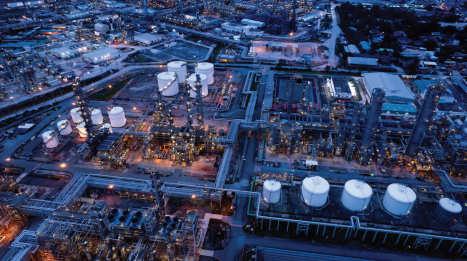
The tools are available. It is now a question of applying them correctly and efficiently and, looking at what can be done to existing assets to reduce the carbon footprint, reduce emissions and be more energy efficient.
There is a lot of talk about bio-fuels and bio-refineries, but what are the real merits of going down this route? In Europe, certain refineries have been transformed into biorefineries. But what constitutes a bio-refinery?
In a number of cases this means that a few units are modified to be able to process some bio-material feedstock which in most cases is then blended into the diesel product. The supply chain, feedstock availability, process, and product distribution is far from straightforward and is not viewed as a potential solution for the Middle East.
From a financing standpoint, the issue we are seeing is that, as many financial institutions are global companies, they want the projects in which they invest to be compliant with international principles and standards. For this reason, the Middle East
has to look at the traditional processes and find different solutions to reduce CO2, reduce emissions, and have a lower environmental impact as an industry.
Many Middle East downstream producers are working on enabling and implementing circularity programmes into their operations. For instance, we are seeing a number of initiatives with regard to products – looking to improve the life cycle assessment including increased waste recycling and incorporating chemical recycling processes, etc.
The renewable polymers market is growing and these polymers are based on bio-based feedstock. So clearly we see that there is activity, and this trend is likely to continue. n
You can download the full ME-TECH Advisory Committee Report at https://europetro.com/metech#advisorymeeting-takeaway.
ME-TECH 2023, the 13th ME Technology Forum for Refining & Petrochemicals, takes place in Dubai from 16-18 May. It will connect the refining & petrochemical community to discuss solutions to the challenges being faced by the global and regional downstream sector as it adapts to new market and industry conditions. See https://europetro.com/metech
In advance of ME-TECH 2023, an extract from the ME-TECH Advisory Committee Report looks at how the Middle East downstream industry can ensure continued growth.
Refining & Petrochemicals Issue 3 2023 oilreview.me 21
The Middle East needs to choose the best route to ensure continued growth and security.
Image Credit: Adobe Stock
Financing the energy transition

AS COMPANIES IN the energy and natural resource sector struggle to find the balance between satisfying shareholder returns and meeting stakeholder lowcarbon demands, new strategies are emerging that could drive capital allocation decisions toward growth and closing valuation gaps, according to “Fuelling Change”, a new Horizons report from Wood Mackenzie.
“In the last year, energy security has trumped sustainability,” said Tom Ellacott, senior vice president, corporate research for Wood Mackenzie. “Companies too have benefited from recent commodity prices and margins to deliver record cash flow.
“That is not to say that decarbonisation goals cannot be met and priorities cannot change. But to spur activity, there needs to be a recalibration of current risks and rewards for investment in low carbon technologies, as well as new incentives from both government stakeholders and financial institutions. There’s no one answer, but smart oil and gas and natural resources companies will realise that protecting the status quo would be a mistake and start to manage their portfolios to reflect a balanced approach of managing legacy output and carbon management.”
According to the report, companies can address this complex dynamic in three key ways:
1. Tend to the legacy cash cows while shifting to a transition growth mindset.
Investors expect companies to balance the need for returns in the short term by tending to their legacy portfolio, while delivering low carbon transformation plans. Visibility of low-carbon profit centres starting to support – and supplant – the legacy cash cows could be a revaluation trigger that shifts the market to a transition growth mindset. Companies can scale back share buybacks to fund the shift. The mining majors and international oil companies allocated US$157bn, or 30% of their operating cash flow, to buybacks in 2022. Companies could still grow base dividends and lift reinvestment rates to over 60%.
2. Bend hurdle rates to reflect transition risks and rewards.
Internal hurdle rates need to follow the divergence in external costs of capital, risk and long-term growth potential. Part of the low ‘return’ of
transitional investment is risk avoidance and optionality. Higher returns could be up for grabs in low-carbon projects with greater commercial risk, such as CCUS developments that include carbon price risk. In times of uncertainty, companies need a bigger portfolio of options to manage risk.
3. Use Mergers and Acquisitions (M&A) and new business models to enable growth and close valuation discounts.
Major oil companies are already using M&A to accelerate expansion into low-carbon businesses, such as biofuels, biogas and renewable power. However, overall capital allocated to low-carbon M&A remains limited. Mining majors also continue to take a low-risk approach to acquisitions of transition-focused commodities. New or modified business models can help reduce the transition valuation discount and support efficient capital allocation in businesses with quite different costs of capital and risk-reward profiles.
“A transition growth mindset does not mean abandoning capital discipline if combined with risk-adjusted and transparent hurdle rates,” said Ellacott. “There are different horses for different courses, depending on a company’s scale, portfolio make-up, geographical focus and legacy skillset. The prize is worth fighting for, bending the carbon curve to limit the world’s temperatures to well below 2°C. And a balanced, disciplined, transition-focused investment approach could grow corporate cash flows sustainably, boosting company valuations.” n
https://www.woodmac.com/horizons/fuelling-change-how-oil-andmining-companies-can-finance-the-energy-transition/
A balanced transition-focused investment approach could grow corporate cash flows sustainably..
A new report from Wood Mackenzie discusses how oil and gas and mining companies can finance the energy transition.
Energy Transition 22 oilreview.me Issue 3 2023
There needs to be a recalibration of current risks and rewards for investment in low carbon technologies.”
Image Credit : Adobe Stock
Restructuring training schemes for energy evolution
How does the Middle East fit into the company’s portfolio and what are the main initiatives in the region?
The Middle East is a key region at 3t Energy Group, and indeed for our global Technical Training and Competence Division, which I head up. Transforming training with technology is our focus, and our customers in the Middle East are not only receptive, but embrace this concept.
With this in mind, we have many game-changing initiatives in place to ensure growth within the region. From full-sized simulators and the incorporation of digital-twin technology with virtual reality into bespoke training programmes, to personal repetitive learning apps and knowledge testing through live, fun quizzes.
Additionally, and to underpin this, we have a specialist sales team located within the Middle East operating out of Dubai who are growing awareness of 3t and building strategic partnerships across the MENA region.
What do you think can be gained with the introduction of the new competency division that you are spear-heading?
We have always had an innovative approach to training and competence at 3t Energy group, but our new division harnesses our technologies and utilises our vast experience in many sectors to focus this into bespoke, fit-for-purpose competence and training programmes for upskilling and nationalisation that have been proven to really benefit our customers.
We do not simply ‘tick boxes’ and there is not a one-size-fits-all approach. Rather, we immerse ourselves in our customers’ cultures, the compliances within the region, and the regulations in the industry to truly understand what best works for them, allowing us to provide a tailored solution to fit their requirements. Thinking globally but acting locally ensures we share best practices and our global experience to provide bespoke services and products as unique as each of our customers.
Where within the sector do you believe there is a particular requirement for further training? Do you believe this plays into the digital vs traditional methods?
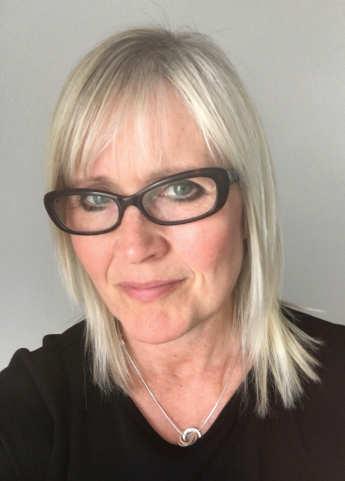
Through rapidly evolving technology, our young workforces have different needs now compared to 10 or 20 years ago, so it’s vital that we meet them on their level, whatever that may be, and wherever they are in the world. Our learning techniques capture the prefered learning methods of people in all demographics, but we always carry out a
detailed analysis to recommend how our customers’ workforces are most likely to retain the learning to apply on-site, and we design the training to suit them and their unique needs.
We often find that a blended solution is the most powerful option combining the strength of both in-person and more traditional means of learning with digital elements to secure better learning outcomes including higher engagement levels and enhanced knowledge retention.
Additionally, safety within the energy sector is always of vital importance, and therefore ensuring that workforces are operating to the highest standards and with the greatest chance of retaining learning means that further training should always be of high priority.
Deborah Yeats, training and competence director, 3t Energy Group, discusses how training initiatives have to be re-shaped to match the evolving industry.
We do not simply ‘tick boxes’ and there is not a one size fits all approach.”
Training Issue 3 2023 oilreview.me 23
Deborah Yeats, training and competence director at 3t Energy Group.
Image Credit : 3t Energy Group
How would you say the training procedures within the energy sector are evolving to accommodate for the energy transition?
There has been a move from a traditional license to practice model to a more holistic model to ensure that skills gaps are closed and there are workforces ready to move into new roles to support the energy transition. For example, in the UK, we are part of an industry-first project with OPITO for crossrecognition for comparable skill sets that will support employers and skills bodies to map workforces to new roles.
This would be extremely beneficial in the Middle East to improve transferable skills for transitory workers, with digital learning being used to mobilise workforces much more quickly that will help support ambitious targets set.
The skills gap and the re-skilling and upskilling of workforces is noted as being one of the greatest challenges that must be met to support the energy transition. This is where the strength of 3t’s competency and workforce solutions, combined with our blended learning capabilities and digital
platforms can really help to support the industry and workforces of the future to achieve these.
There is a big push within the sector at the moment in regards to re-skilling employees and hiring from a more diverse talent pool, how will 3t Energy Group cater to that?

Many countries in the Middle East have the desire to attract local workforce into jobs, allowing for less of a reliance on expatriates.
3t Energy group is helping companies with their nationalisation plans by opening local centres to develop local nationals and
SPM Oil & Gas announces OPITO apprenticeship graduates
SPM OIL & Gas, a Caterpillar company, has announced that 12 local Iraqi apprentices have successfully completed its accredited Offshore Petroleum Industry Training Organization (OPITO) Apprenticeship programme, including the first female local national OPITO Apprenticeship graduate in Iraq.
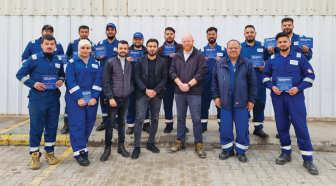
SPM Oil & Gas is the only company in Iraq accredited by OPITO to offer Levels 1 and 2 Training as well as apprenticeships. All apprentices are actively employed in engineering-driven, skilled roles.
SPM Oil & Gas’ OPITO-accredited programmes ensure the availability of an in-country, technically skilled, knowledgeable and safety-conscious workforce for the energy industry. The OPITO programmes are open to oil and gas companies across the Gulf region to help them fulfill nationalisation goals by providing local nationals the skills required to attain technically advanced electrical, mechanical, instrumentation, controls maintenance and operations positions. In addition to its OPITO-accredited curriculum, SPM Oil & Gas also provides leadership development and English language training.
The company has delivered more than 63% combined internal and external training hours to local nationals since 2018 for oil and gas companies in the region, and 63% of the company’s workforce in Iraq is comprised of local national men and women engaged in technical, skilled positions.
“SPM Oil & Gas’ OPITO-accredited programmes deliver unparalleled local content and training that positively impacts oil and gas companies as well as
supporting organisations to achieve targets that are set to support this.
We are also helping local Technical and Vocational Education and Training (TVET) agencies to develop appropriate qualification frameworks for locals to take their first career step; bringing our industry-leading training to where they are.
We understand that each of our customers and the countries that they operate within have their own cultures, industry regulations and compliances to navigate, so our solutions are always tailored to suit those exact requirements giving our customers total peace of mind. n
local Iraqis in the region,” said Ronan Le Gloahec, president – Eastern Hemisphere for SPM Oil & Gas. “We are pleased to train the next generation of local national Iraqi women and men in the technical fields the oil and gas industry demands. We congratulate our 12 Apprenticeship graduates and look forward to the positive impact they will make on local oil and gas businesses and their communities.”
Young workforces have different needs now compared to 10-20 years ago with the evolution of digital technology, meaning changes have to be made in the way that training is taught.
Training 24 oilreview.me Issue 3 2023 Image Credit : Adobe Stock
Re-skilling and upskilling the workforces is noted as being one of the greatest challenges that must be met to support the energy transition.”
Image credit: SPM Oil & Gas
12 local Iraqi apprentices have completed SPM Oil & Gas’ OPITO apprenticeship programme.
Prospects for the global bunker market

THE OUTLOOK FOR 2023 is for higher global bunker fuel consumption on the back of longer expected sailing distances for vessels after sales at the key bunker hubs of Singapore and Fujairah fell in 2022, according to shipping analysts.
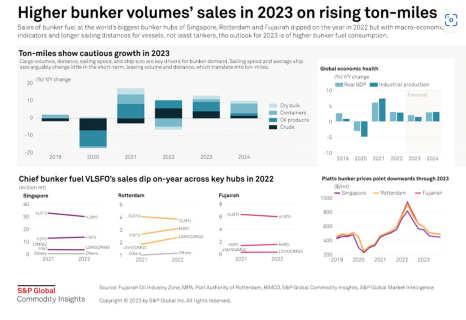
The year 2022 was characterised by Russia’s invasion of Ukraine in February and international sanctions, including a chain of European Union embargoes on certain energy products, with a growing number of companies turning their backs on Russian counterparties. That resulted in vessels travelling longer distances as the EU tried to wean itself off Russian imports of a range of goods, thereby boosting bunker fuel consumption.
“Cargo volumes, distance, sailing speed, and ship size are the most important drivers [for bunker demand],” Niels Rasmussen, chief shipping analyst at shipping industry body BIMCO, told S&P Global Commodity Insights. Sailing speed and average ship size arguably do not change much in the short term, leaving volume and distance to translate into tonmiles, he said.
Sales of fuel oils and marine gasoil for bunkering in Singapore, the world’s largest shipping hub, declined 4% on the year to 47.88mn mt in 2022, according to Maritime & Port Authority of Singapore data. Sales in Fujairah, the third largest shipping hub, slipped 2% on the year to 7.98mn mt in 2022, Fujairah port authority data showed. Singapore and Fujairah have not imposed embargoes on Russian goods.
Sales in Rotterdam, the second largest shipping hub, bucked the trend and rose 10%
on the year to 10.51mn in 2022, according to data from the Port of Rotterdam Authority.
The total volume of goods handled in Rotterdam remained stable on the year at 467.4mn mt in 2022. Container throughput at the Dutch port fell 9.6% in metric ton terms, mainly because container traffic to and from Russia came to a virtual standstill after the invasion of Ukraine. Imports of LNG, mainly from the USA, climbed 63.9% as an alternative to Russian pipeline gas. At the same time, coal imports rose 17.9% as mainly German coal-fired power plants were used more. In line with the sanctions, companies reduced imports of Russian oil, oil products and coal, and succeeded in importing them from elsewhere.
Ton-miles set to rise
Global ton-miles dipped 0.5% in 2022, according to calculations by BIMCO, and they are due to rise 2.5% in 2023 and 2.2% in 2024.
Commodities supply lines are still adjusting to the disruption in links between Russia and some of its trading partners, with Russia
seeking customers further afield for commodities such as oil, while its erstwhile customers in Europe are looking for sellers from further away.
That comes amid a projected if timid improvement in global economic health over the next two years, as the world emerges from widespread coronavirus-induced lockdowns, despite the headwinds of higher interest rates and fears of a crisis in banking and credit.
S&P Global Market Intelligence projects growth in global real gross domestic product to slow to 2% in 2023, from 3% in 2022, before rising to 2.9% in 2024.
Global industrial production grew 2.8% in 2022, with the growth expected to slow to 1.4% in 2023 before rising to 3% in 2024, according to S&P Global Market Intelligence.
“The bunker market has been driven historically by the state of the global economy as GDP growth tends to go hand in hand with increased trade and consequently need for transportation,” S&P Global shipping analyst Anastasia Zania said. In 2022, the market saw the impact of geopolitics, she added. n
Global bunker sales are seen rising as ton-miles recover from the 2022 wobble, say Tom Washington, Mary Tiernan and Claudia Carpenter, S&P Global.
Bunkering Issue 3 2023 oilreview.me 25 Image Credit : S&P Global
Cargo volumes, distance, sailing speed and ship size are the most important drivers for bunker demand.”
Going for sustainable growth
ARAMCO POSTED A record net income of US$161.1bn in its full year 2022 results, up 46.5% on the 2021 figure and representing the largest annual profit ever recorded by an oil and gas company.
The results, Aramco’s highest annual profits as a listed company, were underpinned by stronger crude oil prices, with prices spiking following Russia’s invasion of Ukraine in February 2022, higher volumes sold and improved margins for refined products, while the company continues to strengthen its oil and gas production capacity, as well as its downstream portfolio, to meet anticipated future demand.
Capital expenditure in 2022 also rose sharply to US$37.6bn, an increase of 18% from 2021. Aramco expects 2023 capital expenditure to be approximately US$45bn to US$55bn including external investments, with capex increasing until around the middle of the decade.
“Given that we anticipate oil and gas will remain essential for the foreseeable future, the risks of underinvestment in our industry are real – including contributing to higher energy prices,” explained Aramco president & CEO Amin H. Nasser, adding the company’s longterm strategy entails building both capacity and capability across the value chain with the aim of addressing energy security and sustainability.
“Our focus is not only on expanding oil, gas and chemicals production, but also investing in new lower-carbon technologies with potential to achieve additional emission reductions – in our own operations and for end users of our products.”
Aramco facts and figures, 2022
Total hydrocarbon production: 13.6mn bpd
Total liquids production (crude oil, NGL, condensate: 11.5mn bpd
Maximum sustainable capacity 12.0mn bpd
Total hydrocarbon reserves: 258.8bn boe
Net chemicals production capacity: 56.3mn tons/year
Net refining capacity: 4.1mn bpd
Capital expenditure: US$38bn
Net income: US$161bn
Upstream carbon intensity: 10.3kg of CO2e/boe
In-Kingdom Total Value Add 63%
Source: Aramco
In 2022, Aramco’s average hydrocarbon production stood at 13.6mn barrels of oil equivalent per day (mmboed), including 11.5mn barrels per day (mmbpd) of total liquids. The company is proceeding with implementing the Government’s mandate to increase its crude oil maximum production capacity to 13 mn bpd by 2027. Saudi production was 10.43 mn bpd in February and March 2023 according to the IEA, with 12.22mn bpd sustainable capacity. According to the latest agreed OPEC production cuts, the Kingdom will lower output by an extra 500,000 bpd from May to the end of 2023.
Future strategy
Aramco’s future strategy focuses on four main themes: upstream pre-eminence, to maintain its position as the world’s largest crude oil company by production volume and one of the lowest-cost producers; downstream integration; lower carbon initiatives; and localisation and the promotion of national champions.
Upstream, Aramco will continue its investments in future growth projects, including the MSC expansion to 13.0 mn bpd as well as growing its gas production capacity, to meet future demand growth.
Construction and engineering activities for the Marjan and Berri crude oil increments continue to progress, and are expected to add production capacity of 300 mn bpd and 250 mn bpd, respectively, by 2025.
Construction activities are continuing on the Dammam development project, which is expected to add 25 mbpd and 50 mbpd of crude oil by 2024 and 2027, respectively. The Zuluf crude oil increment is in the engineering phase, and is expected to provide a central facility to process a total of 600 mbpd of crude oil from the Zuluf field by 2026. The facility will also be equipped to process associated gas, condensate, and produced water.
The compression projects at the Haradh and Hawiyah fields have commenced commissioning activities and are expected to achieve full capacity in 2023. The Hawiyah Gas Plant expansion, part of the Haradh gas increment programme, has started commissioning activities and is expected to be onstream in 2023. Construction at the Hawiyah Unayzah Gas Reservoir Storage, the first underground natural gas storage project in the Kingdom, is at an advanced stage and has commenced injection activities. The programme is designed to provide up to 2.0 bscfd of natural gas for reintroduction into the Kingdom’s MGS by 2024. Construction continues at the Tanajib Gas Plant, part of the Marjan development programme. Once completed, the project will add 2.6 bscfd of additional processing capacity from Marjan, Safaniyah and Zuluf fields. The project is expected to be onstream by 2025.
Aramco has progressed with design and initial construction activities of the Jafurah Gas
Aramco is riding high, posting record profits for 2022 and embarking on the largest capital spending programme in its history.
Aramco Review 26 oilreview.me Issue 3 2023
Our focus is not only on expanding oil, gas and chemicals production, but also investing in new lower-carbon technologies.”
Plant, part of the development of the Jafurah unconventional gas field, a key component of Aramco’s unconventional gas programme. The facility will be developed in two phases and is expected to have a raw gas processing capacity of 3.1 bscfd upon completion in 2027. The Jafurah field is expected to commence production in 2025 and will gradually increase natural gas deliveries to reach a sustainable rate of 2.0 bscfd by 2030, which is expected to provide feedstock for hydrogen and ammonia production and will help meet expected growing local energy demand.
Aramco is looking to further expand its natural gas reserves through new field discoveries, new reservoir additions in existing fields, and the delineation and reassessment of existing reservoirs and fields.
The Downstream segment aims to increase refining capacity, grow liquids-tochemicals production, expand trading activities, and leverage the Downstream transformation program to further enhance its earning potential.
Major initiatives include the Amiral petrochemical complex, for which Aramco and TotalEnergies have made a final investment decision. It will be owned, operated, and integrated with the existing SATORP refinery located in Jubail, Saudi Arabia, and will enable SATORP to help advance Aramco’s liquids-to-chemicals strategy.
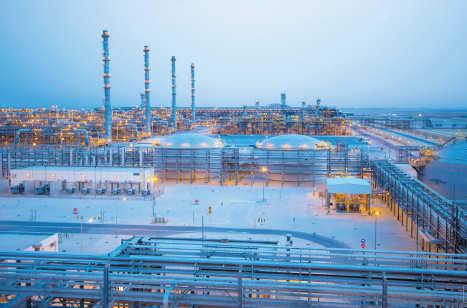
Another initiative is the Aramco and SATORP joint waste plastic recycling
initiative, which aims to establish the first petrochemical circular value chain in the Kingdom to produce polymers from plastic waste.
Sustainability and ESG concerns are a priority, as for every oil and gas company today. Aramco aims to achieve net-zero Scope 1 and Scope 2 greenhouse gas emissions across wholly-owned operated assets by 2050 through a raft of measures that span efficiency gains, renewable power,
Aramco pushes ahead with digitalisation and automation
BOOMING DIGITISATION, WHICH cuts across industries, has made it imperative for businesses to adopt new strategies to stay relevant in a changing landscape.
As such, Aramco in January this year, launched a new company to deal with digital transformation. Called the Aramco Digital Company, the firm provides expertise regarding AI and other emerging technology.
Aramco Digital offers cloud-based services, cybersecurity and AI applications, apart from full-scale smart plant solutions.
Speaking at the 7th edition of the InKingdom Total Value Add (iktva) Forum and Exhibition, the company’s executive vice president of technical services Ahmad A. AlSa’adi commented, “The local supplier ecosystem is a top priority for Aramco as well as a major contributor to the kingdom’s economy. Through this mega program we are helping to create a culture of innovation and provide high quality jobs for our growing population.
“The launch of Aramco Digital Company is a great example of such innovation in action, providing state-of-the-art AI and emerging technology expertise in a vital sector of the economy.”
Aramco has also been upgrading its facilities in line with its digitalisation strategy. One example is the Abqaiq Plant in Saudi Arabia’s eastern region, which is the company’s biggest oil processing and crude stabilisation facility.
Located in the Khobar district, the plant has automated 30% of its operations through the use of robots and drones, machine learning and AI algorithms, and data analytics. As a result, its power generation potential increased by 4.5%, and its carbon intensity was reduced by 31.8% between 2019 and 2022.
Put simply, the company said it wants to meet the world’s energy needs while minimising its carbon footprint. New technology can help Aramco reduce CO₂ emissions, enhance fuel efficiency and conserve water. They can also create new materials that can make products lighter and stronger.
The Khurais plant has also been noted as the world’s largest intelligent oil field, with more than 500 oil wells.
In Khurais, Aramco has installed tens of thousands of sensors to collect data on every aspect of production and power consumption. Aramco said that the
carbon capture, utilization, and storage, and multiple offset initiatives.
The company is maintaining its focus on developing lower-carbon products and solutions, including blue hydrogen and ammonia, lower-carbon fuels, and gas to complement renewables in the domestic energy mix and to reduce liquids-burning in power generation. Aramco is targeting the production of up to 11 million tons of blue ammonia per annum by 2030. n
technology has helped it to increase production at Khurais, while simultaneously reducing power consumption by 18%, reducing maintenance costs by 30%, and cutting inspection times by around 40%.
Aramco has employed other technologies across its facilities as well. These include the Virtual Flow Metre technology, which uses AI to predict oil, water, and gas flow rates in wells.
GeoDRIVE helps reduce the time required to process seismic data, to construct images of subsurface layers that aid in the identification of hydrocarbon accumulations.
Meanwhile, a “sensor ball” allows Aramco to collect data inside a well and float back to the surface. SpiceRack, an autonomous underwater vehicle, records seismic data for subsurface imaging.
Aramco has signed various partnerships to advance digitalisation. They include agreements with Samsung Electronics for 5G and digital transformation, and with DHL for procurement and logistics hub and harnessing digitalisation. The company has partnered with IBM for an innovation hub, and with Zoom, AVEVA, Cognite, Honeywell and others.
Aramco Review Issue 3 2023 oilreview.me 27
Image
Credit Aramco
Developing gas resources is a strong focus of Aramco.
Optimising pipeline operations with data-driven insights
FOR COMPANIES IN the energy sector, optimising systems and processes can bring as much growth as innovating new products and services. Such optimisation typically involves eliminating inefficient or unreliable steps in business systems and processes – a practice sometimes referred to as ‘getting the barnacles off the boat.’ In other cases, it may involve mergers or acquisitions to achieve efficiency savings or refining and enhancing existing infrastructure to gain additional operational efficiencies.
From our direct experience with customers, we know many energy companies with large pipeline networks seek ways to secure more value from their infrastructure, especially in how they manage it on a regular basis. For these companies, the ideal model for a pipeline is for it to be 100% productive, 100% of the time, with no downtime – ever.
The reality is very different. Pipeline systems operate in some of the most demanding environments on the planet, both on land and underwater. They have machinery that breaks, and the pipes themselves are subject to a multitude of different threats.
Some of these threats are geological, such as seismic movements, surface soil erosion, river crossings, and backfill. Others are related to manufacturing, such as production errors, which could lead to leaks and degradation of material strength. Regardless of the nature of the threat, each one needs to be identified, monitored, and addressed.
As part of this effort, operators must implement extensive maintenance assessment programmes and inline diagnostics solutions to maintain pipeline integrity. The key to assuring this integrity is comprehensive visibility of the pipeline’s condition so that issues can be identified at the earliest opportunity and repaired as part of a systematic and planned maintenance programme that can be scheduled with the needs of the business in mind.
A closer look at maintenance programmes
Historically, maintenance programmes centred
around inspection platforms that travelled hundreds of miles of pipeline. These platforms were equipped with sensors that assessed the integrity of pipework using ultrasonic scanning or acoustic resonance, for example.
The results collected by these sensors were data-poor. Rather than providing predictive or preventive insights, they were only reactive in nature. Decisions often had to be made without enough information, leading to stoppages or slowdowns in product flow that ultimately had a negative impact on the business.
More recently, however, this model has evolved, presenting challenges and
opportunities to pipeline operators and their service providers. Today, the best technology and diagnostics solutions provide significantly more accuracy with higher-quality, actionable data.
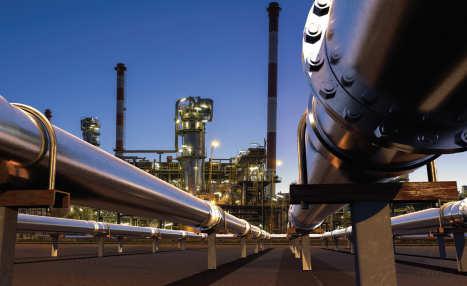
Diagnostic inspection providers have invested heavily in their platforms, significantly increasing the extent and granularity of data they can collect. Advanced sensor capabilities allow them to detect and diagnose a higher number of minor pipeline anomalies as small as a millimeter in depth while providing operators with advance warning of potential issues. This process also gives operators better insights into their pipeline integrity.
The best sensor capabilities are driving substantial growth in the volume of data collected to the point where powerful AI is now being brought to bear in combination with human analysts’ expertise. This shift is driving the adoption of advanced data diagnostics in pipeline management and changing how operators and their industry partners use the data they collect.
The relationship between inspection platforms, data, and analytics is also changing. In the past, the inspection tool was
Pipeline systems operate in some of the most demanding environments on the planet.
NDT Global discusses the business value of advanced sensor capabilities in pipeline management.
Digitalisation 28 oilreview.me Issue 3 2023
Diagnostic inspection providers have invested heavily in their platform, increasing the extent and granularity of data they can collect.”
Image
Credit : Adobe Stock
often regarded as the most critical part of the process. Now, it is the power of the resulting data-driven insights that directly define the quality of a diagnostic evaluation, given the massive volumes of data collected and smart tools such as machine learning that empower analysts to accurately assess threats and flaws and make data-driven decisions. Consequently, the interpretation of reports and the highly sophisticated analysis outputs provide much more business value today than was once the case.
At NDT Global, our people are at the core of our business value –both driving the science and innovation behind our technology platforms and expertly deploying and pulling data from those tools to deliver the Power of Clarity.
By leveraging ultrasonic and non-ultrasonic technologies, such as inertial measurement and others in development, we have the ability to accurately diagnose cracks, dents, damage, corrosion, and any other threats or anomalies, in both liquid and gas pipelines – with energy carriers such as hydrogen to come. Let’s explore in more detail how this sensor data is collected, analysed, and disseminated.

Data collection and consolidation
The combination of long pipeline sector runs and highly granular data collection models mean that inspection platforms can collect vast volumes of data, often in the petabyte range. This data needs to be extracted, transmitted, and stored quickly, accurately, and securely, often requiring significant investment in data storage and management capabilities.
Data analytics
Once data has been collected and validated, data scientists can begin to analyse a data set. The extraordinary development of new analytic tool sets in recent years means the process of data management, analysis, and visualisation is far less problematic than in the past, even considering the far more extensive data volumes now in everyday use.
These new tools help manage and process petabytes of information to enable more preventive and predictive decisions. This approach helps square the circle of having vastly more data to analyse without having access to significantly more – and costly – resources and expertise.
Expert insight
Sophisticated data analysis techniques do not eliminate the need for skilled and experienced specialists to review the results. Data-led analytic models allow engineers and other stakeholders to be more productive and assess issues more effectively, providing better guidance to senior decision-makers about the best course of action needed to maintain pipeline integrity.
More technical insight allows managers to develop business plans that maximise uptime for their pipeline network, while implementing maintenance programmes that assure the safety of employees and the safe operation of their infrastructure. n
NDT Global provides advanced sensor capabilities in pipeline management along with a world-class line-up of data analysts, data scientists, solution architects, and technology. It offers diagnostic datadriven insights so energy companies can optimise how they manage their pipeline infrastructure and maximise the profitability and long-term sustainable business value of their operations – all while helping protect the health and safety of our human communities and natural environment. It’s all about the Power of Clarity.
Digitalisation Issue 3 2023 oilreview.me 29
The relationship between inspection platforms, data and analytics is also changing.”
Demonstrating commitment to localisation
Suppliers to Saudi Arabia’s energy and industrial sectors are demonstrating their commitment to Saudi Arabia’s Vision 2030 strategic framework and Aramco’s In-Kingdom Total Value Add (IKTVA) localisation programme with the launch of new facilities to manufacture critical commodities such as valves.
IN OCTOBER 2022, AMPO POYAM
VALVES, a world leader in highly engineered valves, celebrated the official opening of its new valve manufacturing and servicing plant, AMPO ARABIA, in Dammam 2nd Industrial City. The move represents an extension of the company’s longstanding relationship with the Kingdom, where it has supplied customers with more than 20,000 valves since 1998 for strategic projects such as Marjan field expansion, Berri field development, South Berri water injection plant, the upgrade of water disposal facilities at Qatif and Abqaiq water injection project, among others.
The new manufacturing and servicing facility in KSA, will be an extension of the main valve manufacturing plant in Spain. Covering an area of around 5,000 sq m including valve assembly, testing, painting and servicing facilities, it will enable AMPO to offer a wide range of highly engineered custom-made gate, globe, check and ball valves and bestin-class services and technologies for the local and regional energy industry, covering applications in the oil, gas, petrochemical, chemical, water, mining and power sectors.
“The company wants to transfer global toptier technology and know-how to the Saudi market, helping expand national industry capacity and enabling economic growth and development in the region,” said a company statement. Being closer to its customers, the local facility will positively impact local delivery lead times and aftersales services to meet demands of current and future projects.
Ibon Imaz, AMPO’s managing director, said, “We want to be a strategic partner and we share the Kingdom of Saudi Arabia’s Vision 2030, an important country project. AMPO Arabia is just a start, and will be followed by further business opportunities and investments that can add higher value to the thriving Saudi economy.”
Salah Elkadiki, AMPO ARABIA’s managing director, noted, “Our local AMPO SERVICE team will guarantee a prompt response to
customer needs in terms of technical support in start-up stages, commissioning, engineered solutions, equipment selection, preventive and predictive maintenance, etc.” He added that the company is creating quality job opportunities for Saudi nationals through its extensive training and development programmes.
A month later, IMI Saudi Industry also established a new valve facility in Dammam. The 5,000 sq. m site manufactures butterfly valves and ball valves of various sizes and
pressure ratings suitable for the oil and gas, petrochemical, power, water, and hydrogen markets. By the end of 2023, the factory will also manufacture choke and control valves, and its team of employees is set to grow over the next five years.
Shortly after the opening of the new facility, the company signed its first Corporate Procurement Agreement (CPA) with Saudi Aramco for the order of Severe Service valves, reflecting the new strategic partnership between Saudi Aramco and IMI Saudi Industry for the manufacture and supply of IMI Orton and IMI Truflo Italy products.
According to Jackie Hu, divisional managing director at IMI Critical Engineering, the partnership demonstrates IMI Saudi’s commitment to bolstering national manufacturing capabilities and supporting
 The opening of the AMPO ARABIA facility.
The opening of the AMPO ARABIA facility.
Valves 30 oilreview.me Issue 3 2023
The company wants to transfer global top-tier technology and know-how to the Saudi market.”
Image Credit : AMPO POYAM VALVES
localisation plans for key products, in line with the Vision 2030 strategic framework.
“Having a range of highly engineered valves in IMI Critical Engineering’s portfolio to effectively support the Middle East’s oil and gas industry has made us one of the region’s leading suppliers. Our new, long-term agreement demonstrates that IMI Saudi Industry is fully committed to implementing the Iktva programme to further stimulate regional growth,” said Hu.
“Supporting the large-scale adoption of highly engineered flow control solutions to help realise the potential of more efficient practices is a key reason behind our decision to expand production in Saudi Arabia,” Hu added.
“The opening of this new factory demonstrates our commitment to Saudi Arabia and further highlights our status as a key provider of engineering expertise, ensuring our Saudi Arabian customers can access valve assembly, testing, and other vital support services locally. We have long been a specialist in the design and manufacture of bespoke valves for critical applications and we are using this expertise to help Saudi Arabia enhance their operational efficiencies.”
Earlier in 2022 Emerson, which has a number of manufacturing facilities in the kingdom supporting localisation, launched a facility in Jubail to manufacture solenoid valves, filter regulators and control cabinets. It will enable faster, more efficient service to customers in the Kingdom and nearby countries across the Middle East and Africa region, according to the company.
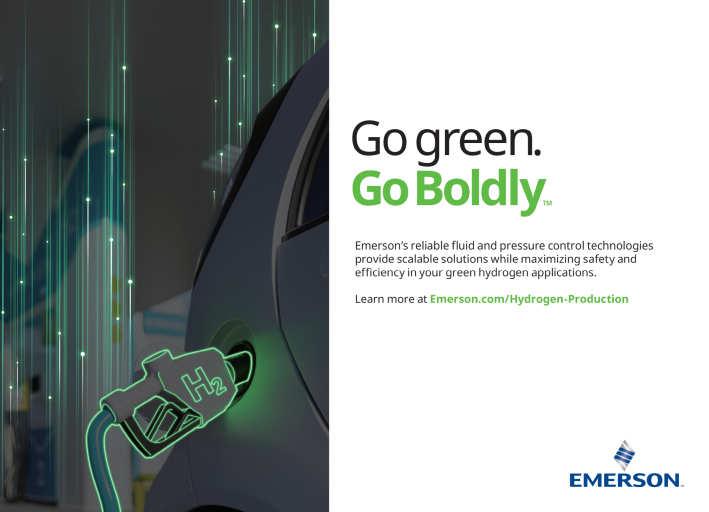
“Our investments in Saudi Arabia have been established not just to serve our customers better but to also support the region’s localisation programmes. We place high importance on increasing business opportunities in the communities we operate in, as well as in developing local talent as we enable diversity throughout our organisation,” said Sergio
Caligara, vice president of Emerson’s discrete and industrial business in Middle East & Africa.
According to Aramco, the iktva programme, which aims to achieve 70% local content, reached 63% local content in 2022, up from 35% in 2015, when it was originally launched. Since inception, more than 150 investments have been made in Kingdom, including products manufactured for the first time in Saudi Arabia, bolstering national manufacturing capabilities, strengthening Aramco’s local supply chain, creating jobs and stimulating innovation.
As part of the iktva programme, Aramco has signed more than 100 corporate procurement agreements (CPAs) with some of the world’s top energy, logistics, and manufacturing companies. Under these arrangements, supplier partners agree to establish local facilities, transfer technology, perform local research and development, and develop the local workforce and supply chain, while gaining preferred status with Aramco. They have driven localisation in critical commodities such as drill bits, valves, pressure vessels, heat exchangers, compressors, fittings and flanges, and process automation systems. n
Issue 3 2023 oilreview.me 31
We place high importance on increasing business opportunities in the communities we operate in, as well as developing local talent.”
Valves
Valves for hydrogen applications
THE POTENTIAL OF hydrogen for industry and environment is enormous, and billion-dollar investments have already been made or are in the planning stages. Valves and actuators play a key role in this, as they are used along the entire hydrogen process chain.
The definition of a European standard for hydrogen is still lagging behind, and there are currently programmes to investigate the hydrogen compatibility of existing valves. However, the valve sector has plenty of experience dealing with the medium of H2 already.
“The hydrogen market is very broad,” explains Thomas Weisschuh, director product management and innovation at AS-Schneider Group. Applications range from generation, storage and transport to use. In electrolysis, in addition to H2, the media of water and oxygen must also be treated. Therefore, the requirements for valves are very different – in terms of pressure, temperature and media handling.
High investments in H2 projects
Electrolysis systems are essential for H2 production. Samson Pfeiffer is supplying more than 1,000 control and shut-off valves for a new plant in Saudi Arabia. “This major order gives us the opportunity to help shape the carbon-neutral factory of the future,” says Pfeiffer sales manager André Schnepper.
AS-Schneider confirms the high level of investment in H2 projects in the Middle East.
“These countries are gearing up for the time after oil and gas,” explains Thomas Weisschuh.
Plants for some large projects are supplied by European companies such as ThyssenKrupp and Siemens.

A challenge for valves
The hydrogen market is undoubtedly an attractive one – but with high expectations with regard to design, quality and material stability. One reason for example is the high level of explosiveness of this gas. The highest standards are therefore required when selecting valves – so internal and external
impermeability are of the utmost importance.
“In order to store the same amount of energy, a higher pressure is usually required,” adds product manager Stefan Schenk. Furthermore, the operating temperature spectrum is significantly greater: at atmospheric pressure, hydrogen only liquefies at a temperature of minus 253°C. In addition, when designing valves and choosing the material, hydrogen embrittlement must be taken into account.
In order to ensure the suitability of the valves, the industry relies on hydrogen emission tests. Hartmann Valves, for example, offers material suitability testing. Comprehensive internal leak tests ensure that statutory thresholds are met and volatile emissions minimised.
Appropriate controls are required
The hydrogen industry is also increasingly shaped by digitisation and automation. “For us, this means that there are constantly new developments in control solutions for valves,” explains Peter Wegjan, sales engineer for special ball valves at Hartmann Valves. Here, they work together with actuator suppliers “so to be able to offer controls tailored to the application”.
One supplier of actuators is AUMA. “Our explosion-proof actuators are suitable for hydrogen,” emphasises Kai Ewald, head of Sales Oil & Gas. AUMA actuators are used, for example, in the power-to-gas plant of Windgas Haßfurt, where excess wind energy is converted into H2. They are used for feeding hydrogen into the gas network.
The market is booming – with consequences for dimensioning, too. Corresponding systems, modules and pipelines are therefore getting larger and larger. Waldemar Pruss Armaturenfabrik notes a trend towards the increasing importance of systems being maintenance-free. They are therefore offering special valves for hydrogen
The hydrogen market is very broad – the applications range from generation to storage and transport to use.
Valves and actuators have a key role to play in new hydrogen developments, and there is a need for standardisation of requirements for the hydrogen market.
Valves 32 oilreview.me Issue 3 2023
The requirements for valves are very different.”
Image Credit: AS-Schneider Group
applications, which on the one hand meet standards and norms, yet on the other also dispense with maintenance-prone components made of elastomers.
Some things still need clarifying – that is why the regulations of the German Association of Gas and Water (DVGW) are being revised and adapted to the future use of hydrogen. The project aim is to investigate the possible applications and limitations of shutoff valves with regard to their H2 impermeability. As mentioned previously, standardisation in Europe is relatively unclear. Some companies apply international standards and databases – such as ASME B31.12 for hydrogen piping and pipelines –and develop an internal standard from this. However, the dynamics of the hydrogen market will also give a strong boost to standardisation. n
Trends and highlights from the valves and fittings industry can be experienced at VALVE WORLD EXPO from 3-5 December 2024 in Düsseldorf. Current industry and product information can be found at www.valveworldexpo.de.

CORTEC launches new NX1 choke design
IN MANY OIL and gas process control applications, the last link in the control chain often is a process valve that is piloted by a solenoid valve. The reliability of these valves is essential, particularly in Emergency Shutdown (ESD) and High-Pressure Protection Systems (HPPS).

The engineering challenge of these mission-critical solenoids is to ensure the reliability of solenoid operation, often in corrosive atmospheres capable of extreme temperature ranges, and whether the valve will perform millions of cycles or a handful of times through its lifespan.
In a whitepaper, Emerson describes critical aspects of solenoid valve design, in particular the significant advantage provided by a low-friction seal design, which enables these valves to deliver a reliable, long-lasting solution in even the most demanding applications.
It explains how various factors can affect valve performance in dormancy and lead to slower response times, or even sticking during actuation. Also explained, with diagrams, is how solenoid valves with designs that reduce friction and prevent sticking are more dependable alternatives to valves with conventional O-ring designs.
The paper also demonstrates why low-friction, safety-accredited valves with non-breathing design, low-friction seal construction and extended coil life present a superior option for ensuring safety in the most missioncritical applications.
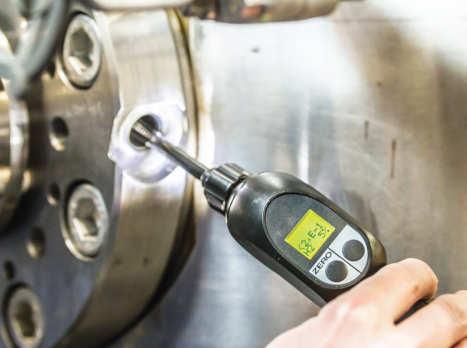
Additionally, it explains how these quality solenoids can reduce engineering times and commissioning costs, reduce power and installation costs, minimise corrosion risk and, with modern coil design, ensure long life expectancy.
You can download the whitepaper at: https://go.emersonautomation.com/solenoid-valve-whitepaper
CORTEC, A LEADING manufacturer of high-quality API valves, has successfully completed field testing for its new remotely operated NX1 model hydraulic choke, a design that increases service life during harsh flowback operations and allows easier field service by the end user.
The NX1 choke offers a compact, 2inch, 1502 choke layout and is an ideal option to control pressure and flow rates for drilling applications via remote operations. With a lightweight design, the NX1 is easily adapted into existing manifolds and offers a range of union or flanged end connections.
Field tested and proven to increase service life when compared with other OEM choke options, the NX1 is rated up to 15,000 PSI CWP and has a 1-inch maximum orifice. During testing, the NX1’s internal trim components performed twice as long as other OEM brands. Additional features include both digital and local visual trim position indication and a wide range of hydraulic choke control console options.
Stephen Corte, vice president, CORTEC, said, “The NX1 is a fieldproven hydraulic choke model designed to increase service life while providing a significant amount of cost savings and efficiencies during harsh drilling applications. We are thrilled to be able to offer our customers this unique, compact choke and control solution that requires minimal maintenance in the field.
CORTEC NX1 hydraulic choke.
Valves Issue 3 2023 oilreview.me 33
With its material suitability testing, Hartmann Valves offers a test enabling checks of existing valves for application with hydrogen.
Image
Credit: Hartmann Valves
Reliable valves are essential in process control applications.
How solenoid valve design enhances operational safety and reliability
Image Credit : Adobe Stock
Image Credit CORTEC
Countering cyber threats for oil and energy companies
Oil Review Middle East speaks with SANS Institute and Nozomi Networks on the latest developments and trends in cybersecurity in the Middle East. Minhaj Zia reports.
AS THE THREAT of cyberattacks continue to rise in the Middle East, companies are looking for solutions to counter these threats in their journey to digital transformation. According to the Tenable Threat Landscape Report, 2022 saw record high cyber breaches for the oil and energy sector, raising the question as to what energy companies can do to implement

sufficient defences to protect critical infrastructure.
Commenting on the latest tends/patterns concerning cyber attacks in the region, Michael Heering, marketing director, Global Field Marketing at SANS Institute, says, “The Middle East has been witnessing a surge in cyberattacks, with cybercriminals targeting various sectors such as energy, finance, and telecommunications. Some of the most prevalent trends include ransomware attacks, which have increased significantly in recent years. In these attacks, cybercriminals encrypt valuable data and demand payment in exchange for releasing it.
“Advanced Persistent Threats (APTs) are another rising concern, often originating from
well-funded cybercriminal groups. These attackers infiltrate organisations' networks and remain undetected for extended periods, causing significant damage.
“Phishing and social engineering attacks have also evolved in sophistication, leveraging advanced tactics to deceive individuals into divulging sensitive information.
“Cloud-based attacks are becoming more common as organisations increasingly adopt cloud services, and cybercriminals exploit vulnerabilities in these platforms to gain unauthorised access.
“Lastly, supply chain attacks are gaining traction, with attackers infiltrating an organisation's network through a trusted third-party supplier, causing substantial
Oil and energy companies are looking for solutions to counter cyber threats.
Cybersecurity 34 oilreview.me Issue 3 2023
Training the workforce is critical in creating a strong cybersecurity culture.”
Image Credit : Adobe Stock
damage to the target organisation and its partners,” Heering explains.
What role does training the workforce in dealing with cyber threats play in prevention, and how important is the introduction of new technologies/initiatives to tackle cyber threats?
“Training the workforce is critical in creating a strong cybersecurity culture and effectively mitigating cyber threats. All employees, both technical and non-technical, should receive regular training to understand the risks and identify potential threats.
“Continuous learning is vital as even experienced security professionals can fall victim to the latest phishing scams. To stay ahead of cybercriminals, organisations must invest in ongoing education, training, and certification programmes for their personnel.
“Adopting new technologies and initiatives is crucial for organisations to tackle cyber threats effectively. This includes implementing advanced security solutions such as artificial intelligence (AI) and machine learning (ML) to detect and respond to threats in real-time. Furthermore, embracing a zero-trust security model can help minimise the attack surface by limiting access to sensitive data and systems.
“Collaboration between industry partners, governments, and law enforcement is essential in sharing threat intelligence and developing effective countermeasures. Initiatives such as information sharing and analysis centres can facilitate this collaboration, helping organisations respond to threats more efficiently,” he says.
Certainly, having security measures in place for oil and energy companies to deal with such threats is vital. Anton Shipulin, industrial cybersecurity evangelist at Nozomi Networks comments on what these companies can do to protect themselves.

“Companies should first start small to improve their asset visibility capabilities; they need to use the segmentation for their network. Everyone knows that segmentations signal
network segmentations and hosts and endpoint device protection, they cover 80% level protection of all environments, they need to use specific devices for controlling the information flow in network, like firewalls and so on,” remarks Shipulin.
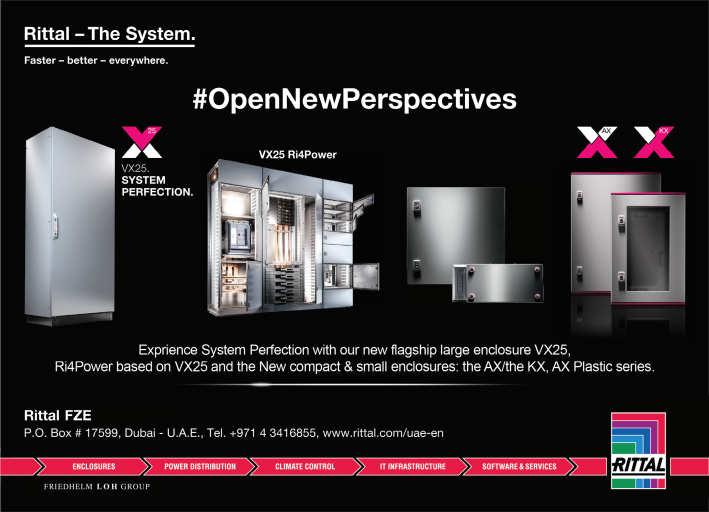
Companies should start small to improve their asset visibility capabilities.”
Cybersecurity Issue 3 2023 oilreview.me 35
Institute
Michael Heering, marketing director, Sans Institute
Image Credit : SANS
“And, they need to do the continuous vulnerability management or deal with detection. Of course, monitoring is a must here, they need to monitor networks, monitor cost activities, they need to send the event information logs to central security operation centres if they have that in the company. If they don't have it, they should establish that. There are plenty of regulations, local, national, international and industry-specific standards, there is no shortage of that. They need to find the one that is most relevant to them and follow the rules, follow the requirements.”
What are some of the ways you implement OT and IoT security solutions to protect critical infrastructure and networks from cyber threats? Focusing specifically on prevention versus recovery from cyber attacks?
“The topic of OT and IoT cybersecurity is a huge topic to provide the right level of security for infrastructures,” says Shipulin. “Companies should improve their processes, use technology, educate people, and there are lots of processes that should be done. Nozomi Networks helps the clients with the solution, we can cover specific processes of network monitoring, specific processes of the asset visibility, network communication visibility, attack detection, vulnerability and weakness discovery. That way, we give them the basic and fundamental data to build and improve their cybersecurity, as it's not possible to protect what you don't know.
“So, first of all, you need to know what you have, you have to have the visibility into your network, into your assets, into processes. We provide the monitoring; we improve their processes of detection.
Our solutions were initially designed as non-intrusive solutions for OT infrastructure doing only monitoring. But, we provide clients with great reporting capabilities; they can use that information, analytics and data for building the next step of prevention. Not only that, we also do the integration with third party systems for this kind of automated response, for example firewalls, network access control systems, security event management systems and so on. This is our way for the prevention and recovery.”
With Industroyer2 and INCONTROLLER attacks making quite significant waves in 2022, what new developments/progress have been made so far regarding countering such threats?
“These two new attacks, Industoryer2 and INCONTROLLER, in context of the whole history of OT-specific malware IoT-specific attacks, they just confirmed that the attackers are getting smarter and it's getting much easier to use the industrial protocols and industrial devices for achieving their goals.”

Shipulin continues to explain that these targeted attacks are not particularly complicated for attackers to carry out.
“So they just demonstrated it is not so
complex, it's not so complicated for ‘bad guys’ to use these protocols. We understand that, we try to cover as much industrial and IoT protocols as possible to give protection and visibility to clients in different industries, including the hardcore OT environments such as oil and gas, and also cyber physical IoT critical infrastructures with the tool that can help them with visibility and detection for detection of attacks. Specific industrial IoT protocols, this is our response for these kind of events,” he concludes.
With GISEC 2023 having concluded earlier this year, it gave both companies to discuss what their focus was at the event, as well as showcasing their latest innovations.
“Our focus was on showcasing the latest cybersecurity training programmes and solutions offered by the SANS Institute,” says Heering. “We aimed to emphasise the importance of workforce training and development in combating cyber threats in the Middle East. We also highlighted our cutting-edge courses, including those that address emerging trends such as cloud security, threat intelligence, and secure DevOps. Our presence at GISEC aimed to create awareness about the value of SANS training and certifications in building a strong cybersecurity workforce in the region.
new product, which is called Nozomi Ark, an endpoint security agent which extends the protection of our OT and IoT clients with host activity monitoring capabilities. So, this was our main message at the event that will show that now we are even better in monitoring environments, even in areas where it is not possible to use network sensors; now we have endpoint sensor. So this is bigger coverage.
“The show was a resounding success for us, with a considerable number of attendees visiting our booth to learn more about our offerings. We engaged with professionals from various industries, providing them with insights into how our training programmes can help them enhance their cybersecurity posture.
“The Middle East faces a growing number of cyber threats, making it essential for organisations to invest in workforce training and adopt advanced technologies to tackle these challenges. By focusing on continuous learning, embracing new initiatives, and fostering collaboration, organisations can build a robust cybersecurity culture and effectively mitigate risks. GISEC provided us with an excellent platform to share our expertise and contribute to the development of a more secure digital landscape in the region. The highlight for SANS was to also receive the award for enabling the cybersecurity industry growth in the region from his excellency Dr Mohamed Al-Kuwaiti on behalf of the UAE Cyber Security Council,” he concludes.
For Nozomi Networks, Shipulin explains, “For us, the the big news this year, right before GISEC started, was the launch of our
“The second message for GISEC was to show that we are growing in our expansion, covering not only hardcore OT environments lsuch as oil and gas and energy. And so we're moving to the protection of critical IoT infrastructures, in industries such as banking, healthcare, transportation, airports, maritime terminals, and so on.
“Many companies don't think they should be protected because there are no critical industrial processes, but they have systems that that are very important and crucial for the whole business process and continuity of the organisation.
“Our message was to show that we extend in coverage technologically with close to network, we expand with the industries and of course, we expand globally.”
The message indeed, is clear from both companies; as the Middle East witnesses a surge in cyber attacks on the oil and energy sectors from increasingly sophisticated methods, solutions such as training the workforce and introducing new technologies to tackle such threats is the way forward. Industroyer2 and INCONTROLLER attacks confirm attackers are getting smarter, therefore encouraging companies to stay vigilant and continue vulnerability management. n
Anton Shipulin, industrial cybersecurity evengelist, Nozomi Networks
Cybersecurity 36 oilreview.me Issue 3 2023
The Middle East faces a growing number of cyber threats.”
Image Credit Nozomi Networks

The benefits of a centralised digital APM system
Richard Irwin, a solution marketing manager at Bentley Systems, describes how leveraging Bentley Systems’ AssetWise APM to digitise workflows increased asset reliability by 25.7% and reduced environmental flaring by 82.6% for OQ Upstream.

Digitisation and asset performance optimisation
OQ, a global strategic management company based in Oman, operates in 17 countries and, with its fuels and chemicals sold in over 80 countries, is a key player in the energy sector. The OQ Upstream business unit focuses on oil and gas exploration and production, and operates almost all of Oman’s gas transportation networks. The company currently produces 220,000 barrels of oil equivalent per day and transports natural gas for 150 connected parties in the country via a large-scale network of high-pressure gas pipelines. Committed to operational excellence and a low-carbon future, OQ is working toward maximising value for Oman
To optimise asset performance and operations, OQ used AssetWise APM to centralise and digitise asset performance, and management processes.
energy and ensuring a sustainable future through asset optimisation and digitisation. Managing more than 110,000 maintainable assets, more than 44 plants and stations, and over 4,300 kilometres of pipeline across Oman, OQ understands the importance of optimising asset reliability and performance, and the role that digitisation plays in achieving
sustainable, world-class operations. From the early OQ years, all reliability aspects were paper based, scattered, and treated in reactive mode. “Digitalisation is a key enabler in our journey towards operational excellence,” said Mansoor Al Abdali, managing director at OQ GN. With an eye on strategic asset management, the company initiated a project to digitise asset maintenance and reliability processes, ensuring asset integrity, cost efficiency, and optimal plant operations.
Streamlining data, reporting, and asset maintenance workflows
Asset performance optimisation is a big concern within OQ and the oil and gas
Digitalisation 38 oilreview.me Issue 3 2023 Image Credit : OQ Upstream
Digitalisation is a key enabler in our journey towards operational excellence.”
industry as a whole. Failed assets result in shutdowns, and shutdowns lead to a loss of production, repair costs, environmental impacts, and flaring, as well as safety risks.
“We need to avoid shutdowns and failures,” said Hussain Al Naamani, reliability management team lead at OQ EP.
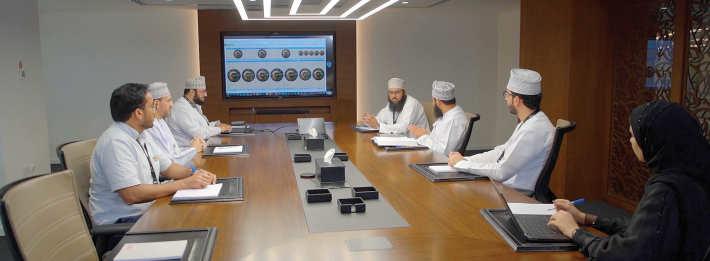
To avoid shutdowns, OQ needed to implement preventative maintenance and corrective action plans. This required the identification and understanding of asset failure modes, improving asset maintenance and reporting strategies, and streamlining workflows and data coordination among multiple disciplines.
To address these issues, OQ wanted to develop a centralised digital system to access, share, and analyse asset data. “We need to have one single source for data management, and we need to have the data reported to us,” said Khulood Al Maawali, asset performance engineer at OQ EP. To facilitate collaboration, establish reporting workflows, and enhance data quality and quantity, OQ required a digital platform capable of providing dashboarding and visualisation, and automating key performance indicators. The expected outcome of their digital efforts was to end up with better decision-making to extend asset life and achieve proven reliability growth.
AssetWise provides centralised digital solution
To manage asset integrity, reliability, and maintenance, OQ selected AssetWise APM, which provided a central digital platform for data integration and analysis, accessible to the internal team, field operations, and stakeholders.
“AssetWise APM first allowed us to solve the problem of data management; it is a powerful tool to store and analyse data. In addition, it is customisable to meet the business needs,” said Faisal Al Noumani, senior reliability engineer at OQ GN. Using
Bentley’s application offered a flexible data environment capable of aggregating asset data from multiple sources, including mobile uploads from field inspections and OQ’s internal computerised maintenance management system (CMMS). The software facilitates multidiscipline and stakeholder collaboration and data coordination, as well as serving as a single source of truth for asset data management and analytics, enabling proactive decision-making.
More specifically, the interoperability and automation features of AssetWise APM streamline reliability management information for OQ by digitally calculating asset availability and maintainability, and digitising condition monitoring activities. By collecting, analysing, and managing accurate asset information, OQ has valuable insights into asset health and has developed a failure reporting, analysis, and corrective action system.
“Using the link between APM and the CMMS, all failures and downtime from assets are reported to us,” said Amran Al Aamri, reliability engineer at OQ EP. Bentley’s AssetWise APM technology also provides the foundation for OQ’s asset integrity management programme and risk-based inspections.
“AssetWise APM is an enabler for innovation in terms of asset performance and it is adaptative to apply our unique solutions, integrating CMMS, real-time data, and Power BI,” said Al Aamri.
Driving business excellence and sustainability
Overall, AssetWise has helped OQ overcome the challenges related to asset reliability management, monitoring, and maintenance, ensuring corrective action measures are in place, optimising lifecycle asset integrity, performance, and plant operations. Using AssetWise APM to digitise OQ’s lifecycle asset activities has allowed them to recognise the impact on reliability growth, reduction in failures and unplanned downtime, and less flaring impact on the environment. Based on implementation at one compressor site, the digital solution saved 14.8% in total maintenance costs and reduced functional failures by 50% to achieve an annual operational reliability growth of 4.3%. Within the last five years, OQ has seen asset reliability increase by 25.7%, plant uptime operations maintained at 98%, and flaring reduced by 82.6%, resulting in safer, more efficient, and, ultimately, optimal operations.
“After all these initiatives and technologies in which we end up with proven benefits in safety, production, reliability, availability, and reduction in environmental impact, the next step is a digital twin,” said Khalid Al Fahdi, head of technical services at OQ EP.
Dedicated to driving continued business excellence and operational efficiency through digitisation, OQ has already started a digital twin pilot project, incorporating smart technology applications and artificial intelligence. The plan is to have a complete digital twin platform by 2024 where Bentley’s AssetWise APM will feed the model with asset performance data along with the data from digital monitoring devices to enable real-time, intelligent, and sustainable operations. According to Al Fahdi, “We will continue working with Bentley in the future to grow and enhance sustainability.” n
AssetWise APM is an enabler for innovation in terms of asset performance, and it is adaptive to apply our unique solutions.”
Digitalisation Issue 3 2023 oilreview.me 39 Image Credit: OQ Upstream
Having a centralised digital asset performance management platform reduced functional failures by 50% and improved asset reliability by 25.7%.
Teledyne brings new LIDAR sensor for USV at
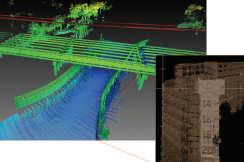
Ocean Business 2023
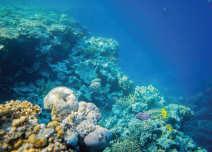
TELEDYNE GEOSPATIAL BROUGHT its latest advancements in ocean mapping hardware and software solutions to Ocean Business 2023, which was held at the National Oceanography Centre, Southampton, UK earlier this month.
Visitors were introduced to the CL-360 for marine applications, a LIDAR sensor that can be seamlessly integrated with high resolution multibeam systems and the CARIS Ping-To-Chart workflow, allowing for full above and below water image capture with survey grade accuracy in a single workflow.
The sensor’s 360-degree scanner and up to 2 million points/second collection rate provides a premier solution for mapping coastal infrastructure. The CL-360 is the only LIDAR system designed for use on a USV (uncrewed surface vessel) which provides survey grade range and accuracy.
Sonardyne unveils new Origin ADCPs
SONARDYNE, A LEADING provider of underwater acoustic technology, announced the launch of its new Origin Acoustic Doppler Current Profilers (ADCPs). The new ADCPs are designed to be simple to operate with class-leading data results, integrated communications and positioning, making it suited for a wide range of applications, including marine research, offshore renewable energy and defence.
There are two introductions for the new Origin ADCP family: Origin 600 has a five-beam configuration with a central vertical beam. Paired with a maximum sampling frequency of 4Hz on all beams, it is suitable for waves and turbulence applications, as well as mean currents. Combining field proven transducers with an integrated modem, internal rechargeable battery and Edge processing, Origin 600 expands ADCP capability for acquiring mid-range current profiles. The second, Origin 65, boasts a unique acoustic design that increases robustness, reduces cost, all the while maintaining outstanding current profiling performance. The integrated modem allows for remote actions, while the PIES functionality delivers highprecision time-of-flight and average in-situ sound velocity data.
Nauticus Robotics launches next generation of aquanauts
NAUTICUS ROBOTICS, INC., a developer of autonomous robots using AI data collection and intervention services for the ocean industries, announced the commencement of commissioning exercises of the first of three second-generation Aquanauts, dubbed the MK2. Following commissioning, Nauticus expects to send the initial Aquanaut MK2 units to the North Sea and the Gulf of Mexico in the coming months to support customer initiatives in those regions.
The Aquanaut MK2 is a fully electric, untethered and autonomous subsea robot that is controlled through acoustic communication networking and underpinned by Nauticus’ proprietary software suite, toolKITT. The AI-based software suite allows for robotic controls, user interfaces, sensor integration, simulation, data analysis, and communication frameworks purpose-built to enable subsea work.
The MK2’s defining capability is operating in two separate modes, actively transforming itself between the excursion and intervention configurations. Excursion mode involves the usage of data collection and perception sensors, while intervention mode utilises two of Nauticus’ Olympic Arms – electric work-class manipulators – to perform precise yet powerful interactions with subsea infrastructure and objects to complete complex, underwater tasks.
Voyis releases 3D camera without compromise
VOYIS INTRODUCED DISCOVERY Vision Systems to solve the current trade-off between Piloting Cameras, which provide low latency video but lack the image data needed for 3D model generation and 3D Inspection Cameras, which prioritise image data at the cost of piloting effectiveness.
Discovery offers 4K piloting video and 3D data without compromise. Voyis offers two versions of the Discovery: The Discovery Camera and the Discovery Stereo.
The Discovery Camera is a compact imaging and lighting system for small ROV platforms. It streams 4K low latency piloting video and captures crisp still images for direct 3D modelling. Its high-sensitivity sensor and wide-angle lens offer an ultrawide 130°x130° field of view. With a 4Kcapable 8-megapixel sensor and lossless sensor zoom, the camera delivers highquality video. The Nova Mini lights provide 125,000 lumens of even illumination, extending the system's operating range and feature detection capabilities. Edge computing corrects visual inaccuracies and high dynamic range information corrects lighting for direct use of stills images in 3D modelling.

The Discovery Stereo enables depth perception and real-time 3D modeling to ROVs operating at up to 4000m depth. It maintains a wide field of view (75°x75°) and low latency for the piloting video stream, while onboard computing calculates 3D depth maps for measurements and coverage monitoring. These depth maps are 3D point clouds calculated from feature matches between a pair of images at a single point in time, which can be displayed in a real-time rotatable video stream to observe the changing 3D scene and allow the pilot to monitor the vehicle’s position relative to the target. This depth perception has the potential to enable autonomous capabilities on newer robotic platforms, like manipulator automation or station keeping without seabed bottom-lock.
Both product versions come integrated with Nova Mini lights, as well as direct support of DDS (Data Distribution Service) and ROS2 (Robot Operating System).
Subsea Innovations
Survey of a bridge crossing an inland waterway.
Voyis’ camera without compromise
40 oilreview.me Issue 3 2023
The MK2’s defining capability is operating in two separate modes.
Image Credit: Teledyne
Image Credit: Voyis
Image Credit: Adobe Stock
Supplying the world’s energy markets
TRIPLEFAST IS LEVERAGING the power of partnerships and global presence to supply the world's energy markets.
Established in 2002, TripleFast was founded to act as LoneStar Group's manufacturing and supply centre in the Middle East. In the two decades that have followed, the organisation has grown, supplying precision-engineered components to energy markets in the Middle East, North Africa, Caspian, Indian subcontinent and Asia Pacific.
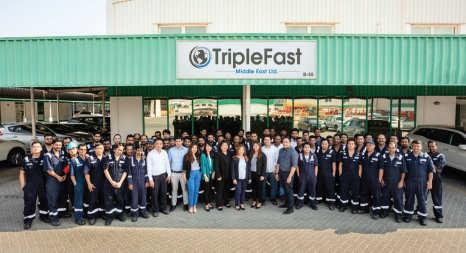
Headquartered in Jebel Ali, TripleFast manufactures and supplies high-quality bolting, seal, gasket and coating solutions from its state-of-the-art 15,000 sq. m facility. As part of the Lonestar Group, which has 13 businesses located in key global markets around the world, TripleFast utilises its multicountry network to supply products and solutions to global energy markets. The group holds a worldwide stock range of fully-certified raw materials, semi-finished and finished components worth more than US$48mn. This enables the business to produce either nonstandard customer parts or supply in accordance with national and internationally recognised standards and specifications.
Steve Kettle, TripleFast Middle East's vice president MENA APAC, explained how critical
combining global expertise with regional presence is to the organisation's success.
"The energy industry is highly interconnected and globalised. The companies we work with, including OEMs, operate across multiple countries, and they require a reliable supply of bolting solutions that meet international standards and specifications. For over 60 years,
the LoneStar Group has established partnerships with major OEMs and suppliers around the world, ensuring we can tap into our global operations to meet our customers' requirements, wherever their operations are."

Quality is a key pillar of TripleFast's mission. TripleFast components are used in energy markets to ensure the safe and reliable operation of critical energy infrastructure, such as power plants, refineries, pipelines, and offshore drilling rigs. Bolting solutions, which include nuts, bolts, screws, and fasteners, play a vital role in connecting and securing components of these structures.
Kettle said, "Our bolting solutions play a vital role in connecting and securing components of critical equipment. Our robust quality and testing programmes ensure our products are able to withstand high pressure, extreme temperatures and harsh operating conditions while maintaining their integrity and strength over time. If the quality of bolting solutions is compromised, it could lead to catastrophic failures, such as leaks, ruptures or explosions, resulting in severe damage to the energy infrastructure, as well as potential loss of life and environmental damage."
TripleFast Middle East, specialist in fasteners, gaskets and seals, celebrated 20 years of operation in the UAE in 2022.
n
The TripleFast Middle East team.
Company News
Machining at the TripleFast Middle East facility.
Image Credit : TripleFast
Issue 3 2023 oilreview.me 41
Image Credit : TripleFast
OTC Spotlight on New Technology award winners announced
THE OFFSHORE TECHNOLOGY Conference (OTC) has announced the winners of their 2023 Spotlight on New Technology Award. This honour is given exclusively to OTC exhibitors who are reshaping the offshore energy sector through innovation and developing technologies. This year, 15 technologies, seven of them from small businesses, were selected due to their advancements in the industry.
The award recipients were selected based on the following criteria: product uniqueness, the degree of ingenuity, demonstrated success, commercial viability, and the ability to make a significant impact across the offshore industry.
“At OTC we take pride in recognising the companies transforming the future of the offshore energy sector. The Spotlight on New Technology Award is one of the many ways we like to show our appreciation. Revolutionising the field is no easy task. It requires collaboration, intense consistency, and the brightest minds in the industry to drive innovation. This year’s recipients exemplify these efforts and we are proud to acknowledge them,”said Paul Jones, chairperson, OTC board of directors. The winners are as follows:
2023 Spotlight winners
• Baker Hughes, producer of REACH wireline-retrievable safety valve
• Hägglunds, a brand of Bosch Rexroth producer of Atom – gearless direct drive
• Framo AS, producer of Framo submerged turbine
• OSIRenewables, an Oil States enterprise, FTLP floating wind platform
• Oil States, active seat gate valve
• Saipem, producer of FlatFish subsea drone
• SLB and Equinor, producer of Epilogue dual-string barrier evaluation
• Teledyne Marine, producer of 3-channel vertical optical feedthrough system
2023 Spotlight small business winners
• CARBO, producer of CARBOTRACE
• GOWell, producer of Deformation and Eccentricity Tool (DEC)
• Oliden Technology, producer of TerraFusion Azimuthal Gamma Ray, annular pressure and ultrasonic imaging LWD Tool
• Opla Energy, producer of OplaSmart software
• Opla Energy, producer of PMD, Pressure Management Device
• Valvetight EMT, producer of DBB-SAVER for LNG
• Well Resolutions Technology, producer of GeoTracker At-bit Propagation Resistivity
The 2023 Spotlight on New Technology Award recipients will be honoured at this year’s conference on Monday, 1 May at NRG Center in Houston, Texas, USA.
Halliburton launches RockJet family of shaped charges
HALLIBURTON HAS INTRODUCED the RockJet family of reservoir-optimised shaped charges for the enhancement of well productivity.
The RockJet family of charges was developed at the Advanced Perforating Flow Laboratory at the Halliburton Jet Research Center using real rock under downhole conditions to optimise downhole performance. Halliburton’s RockJet charges are the first certified using the American Petroleum Institute’s new perforation witnessed test protocol.
RockJet shaped charges provide the deepest penetration in downhole stressed rock conditions while maximising casing hole size, delivering the greatest possible well performance.
The charges allow operators to enhance well productivity by providing optimum reservoir connectivity through deeper formation penetration and a larger perforation tunnel diameter downhole. RockJet shaped charges help increase production and improve well productivity and injectivity by improving reservoir contact through deep and clean tunnels that extend beyond the damage zone. When tested at downhole conditions, they delivered 22% higher penetration and an 83% increase in area open to flow.
“The RockJet family demonstrates our commitment to develop innovative technologies that drive increased production for our customers,” said Chris Tevis, vice president of Wireline and Perforating services, Halliburton. “In the perforating business, optimising penetration depth and flow area is the key. A lot of companies may have charges that are tested on the surface, but how they perform in downhole conditions is difficult to prove. By following the API’s new test protocol, we can provide our customers with confidence that the RockJet charges, custom engineered at JRC’s Advanced Perforating Flow Lab, will perform downhole.”
New OGI cameras launched
TELEDYNE FLIR HAS debuted the new GSeries, a family of high-tech, cooled-core optical gas imaging (OGI) cameras that can help leak detection and repair (LDAR) professionals seamlessly locate and document harmful gas emissions.
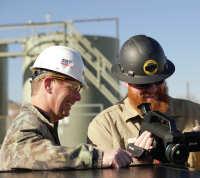
The G-Series features seven camera models. All models are available with wireless connectivity to allow operators to automatically upload and store saved images and videos to FLIR Ignite cloud software while in the field. G-Series cameras provide easy compatibility with third-party analysis software, enabling operators to wirelessly share captured content with colleagues across the world for review, providing further analysis and processing. Quick-swap interchangeable lenses give users the flexibility to inspect from multiple distances.
Teledyne FLIR engineered the FLIR G620, Gx320, and Gx620 models to detect and accurately quantify hydrocarbon, fugitive gas, and other volatile organic compounds (VOC) emissions in the oil and gas industry, while the G306 and G343 models give utility inspectors superior image quality and advanced features to detect sulfur hexafluoride and carbon dioxide, respectively, to help maintain electrical equipment. The G346 and G304 provide an effective method to detect carbon monoxide or refrigerant leaks and potential issues that will improve safety and productivity within the plant environment.
“For the first time, the Teledyne FLIR GSeries provides unmatched user ergonomics with quantification in camera for the hydrocarbon models, adding seamless emissions measurement into the everyday leak detection and repair process,” said Craig O’Neill, Global OGI business development director, Teledyne FLIR. “These new models represent a breakthrough in OGI with advanced features, updated wireless communication protocols, and a rotatable touchscreen LCD to maximise user efficiency in the field.”
Innovations
42 oilreview.me Issue 3 2023
The Teledyne FLIR 66180 DE5A5607.
Image credit: TTeledyne FLIR
Honeywell launches LOHC
HONEYWELL HAS LAUNCHED the Honeywell Liquid Organic Hydrogen Carrier (LOHC), a solution that enables the longdistance transportation of clean hydrogen. This cost-effective solution can help meet the growing requirements for hydrogen use across various industries by leveraging existing refinery and transportation infrastructure.
While hydrogen is expected to play a critical role in reducing greenhouse gas emissions, at standard conditions, it is a flammable gas with low density and cannot be transported efficiently in a gaseous form. Current solutions for transport include liquified hydrogen and chemical carriers such as ammonia, which would require additional infrastructure to accommodate new volume. Honeywell UOP’s LOHC solution utilises existing refining assets and infrastructure to create and transport the carrier.
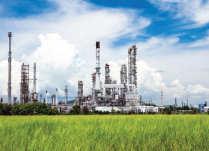
Low-cost non-intrusive sensor system developed
RESEARCHERS FROM KOREA have proposed a low-cost, non-intrusive sensor system for accurate pipeline damage detection.

There are two kinds of sensors for this purpose – intrusive and non-intrusive. Intrusive sensors are highly accurate sensors that measure pressure or mass flow and must be pre-installed during the construction of the pipeline. Non-intrusive sensors, on the other hand, use light and sound-based measurement systems. They can be installed after a pipeline is constructed, thereby offering more flexibility. However, non-intrusive sensors are expensive and are affected by environmental conditions and noise.
To overcome these limitations, a group of researchers led by assistant professor, Yun-ho Shin of the Department of Naval Architecture and Ocean Engineering at Pusan National University, has proposed a novel non-intrusive sensor system based on a low-cost, force-sensing resistor (FSR). The research was conducted jointly with the Korea Institute of Machinery and Materials (KIMM) and was published online in the Structural Control and Health Monitoring journal on 7 February 2023.
The sensor consists of a stiff clamping band with an FSR that contains conductive particles in a non-conductive polymer. “When the pressure inside a pipe increases, the contact force between the pipe and clamping band also increases. That, in turn, compresses the FSR. As a result, the conductive particles come closer to each other, and current starts flowing in the nonconductive polymer due to quantum tunneling. This brings down the FSR resistance. Hence, the sensor can indirectly measure pipe pressure and detect changes in it,” explained Shin. The researchers found that the novel sensor's measurements showed a 99.4% correlation with a commercial, intrusive sensor, emphasising its accuracy.
The researchers then utilised the Euclidean distance method to determine where the sensors must be optimally placed in a pipeline network. Based on its results, they installed two sensors on a naval ship-like fire main pipeline system. Their data was fed to support vector machine – a machine learning-based classification algorithm – which allowed them to detect the type and location of damages in the system rapidly and accurately.
In the Honeywell LOHC solution, hydrogen gas is combined, chemically through the Honeywell UOP Toluene Saturation Process into a convenient liquid carrier compatible with existing infrastructure. The carrier can then be transported in the same way as gasoline or similar hydrocarbons. Once at its destination, the hydrogen is recovered from the carrier using the Honeywell UOP Methylcyclohexane Dehydrogenation Process. Existing idle oil refining assets can be revamped to release the hydrogen from the liquid carrier for use in multiple commercial and industrial applications. The carrier used in the Honeywell LOHC solution is readily available and requires minimal makeup.
“With increased focus on companies reducing their carbon dioxide footprint and growing the hydrogen economy, Honeywell LOHC can offer a long-distance transport option that can kickstart hydrogen ecosystems,” said Bryan Glover, president, Honeywell UOP. “Our LOHC solution can aid in the energy transition because it utilises existing refining assets and offers comprehensive solutions across the hydrogen value chain.”
“The FSR-based sensors can be applied to any pipeline system in industries with a high risk of pipe failure, including nuclear power plants and naval ships. They will also reduce required manual work by automating pipe integrity monitoring,” concluded Shin.
KNUD E. HANSEN designs CO2 tanker
KNUD E HANSEN has designed a CO2 tanker, which constitutes a significant contribution to the industry of carbon capture, utilization, and storage, according to the company.
Captured CO2 will be stored in offshore oil fields either as part of the enhanced oil recovery (EOR) process, which is already taking place on a small scale, or it can be injected into emptied and discontinued fields with storage as the sole purpose.
The value of CO2 as a “trade product” is based on political taxes and funding. One of the main drivers is the CO2 tax that controls the value of CO2. The CO2 tax is expected to increase in the years to come; hence, transporting captured CO2 to storage or EOR sites makes it more attractive today.
Transport of CO2 by ship from captured locations to offshore storage areas, as well as onshore terminals will be a major industry that requires a new kind of vessel: the dedicated CO2 carrier.

The CO2 carrier will be a DP-2 ship with an anchor loading system. It will have tanks for storage and transfer equipment for the off-loading and optional heating of CO2 to pressure and temperature for the underground injection site.
The ship is equipped with a novel propulsion system that features a twin-skeg design with two contra-rotating propellers providing significant fuel savings, as well as contributing to the station keeping performance.
Innovations
The solution utilises existing refinery assets.
Unexpected pipeline failures can lead to leakages that pollute the environment and compromise public safety.
Issue 3 2023 oilreview.me 43
The CO2 tanker design.
Image credit: Honeywell
Image credit: Adobe Stock
Image credit: KNUD E. HANSEN
Project Databank
Compiled by Data Media Systems
OIL, GAS AND PETROCHEMICAL PROJECTS, KUWAIT
Japan receives low-carbon ammonia shipment from Saudi Arabia
A FIRST SHIPMENT of independently-certified, low-carbon ammonia has arrived in Japan from Saudi Arabia for use as fuel in power generation.
The shipment is the result of a successful multiparty collaboration across the low-carbon ammonia value chain. The ammonia was produced by SABIC Agri-Nutrients (SABIC AN) with feedstock from Aramco, and sold by Aramco Trading Company to the Fuji Oil Company. Mitsui O.S.K. Lines was tasked with shipping the liquid to Japan, then the low-carbon ammonia was transported to the Sodegaura Refinery for use in co-fired power generation, with technical support provided by Japan Oil Engineering Co.
The ammonia is categorised as low-carbon because CO2 from the associated manufacturing process was captured and utilised in downstream applications.
Japan’s Ministry of Economy, Trade and Industry has announced plans to increasingly harness ammonia as a fuel for power generation and for ship propulsion, as part of the country’s 2050 decarbonisation goals. The low-carbon ammonia that reached Japan is part of broader efforts by Aramco and SABIC AN to
establish a global supply network for this lower-carbon fuel. Aramco and SABIC AN aim to supply low-carbon ammonia to other players to meet their early demand needs.
Olivier Thorel, Aramco senior vice president of Chemicals, said, “This is another milestone that highlights the possibilities for lowcarbon hydrogen and ammonia made from Aramco feedstock, with the potential to play a role in a lower-carbon future. Not only is lowcarbon ammonia a means to transport lower-carbon hydrogen, it is an important energy source in its own right that can help decarbonise key sectors – including power generation for both utilities and industries. By dispatching this accredited low-carbon ammonia to Japan, we are helping chart a course for the development of this vital commodity.”
In 2020, Aramco collaborated with SABIC to dispatch the world’s first shipment of low-carbon ammonia to Japan. In 2022, Aramco and SABIC AN received the world’s first independent accreditation for low-carbon hydrogen and ammonia products. By the end of that year, the two companies had delivered the world’s first accredited low-carbon ammonia shipment to South Korea.
Project Name City Facility Budget Status KNPC - Mina Abdulla Debottlenecking of Coker Unit 20 Mina Abdullah Refining 93,700,000 Commissioning KOC - Jurassic Production Facilities (JPF-4 & JPF-5) - Overview Northern Kuwait Gas Field, Development 1,884,000,000 Construction Drilling & Production KOC - Jurassic Production Facilities (JPF) - JPF-4 and JPF-5 Northern Kuwait Gas Field, Development 980,000,000 Construction Drilling & Production KIPIC - The Petrochemical Refinery Integration Project (PRIZe) Al Zour Polyethylene, Polypropylene 9,000,000,000 Feasibility Study Al Khafji Joint Operations (KJO) - Dorra Gas Field Development Neutral Zone Gas Field 3,000,000,000 Feasibility Study KOC - West Kuwait BS-171 Gas Sweetening Facility West Kuwait Gas Processing 300,000,000 Feasibility Study KNPC - New Local Marketing Depot At Matlaa Area Northern Kuwait Offsite & Storage Tanks 1,040,000,000 FEED KOC - Al Zour New Refinery Crude Oil Pipelines Ahmadi Oil Pipeline 845,000,000 Commissioning KOC - East Kuwait Gas & Condensate Network Modernization East Kuwait Gas, Gas Pipeline 100,000,000 EPC ITB KOC - Wara Pressure Maintenance Project - Train 3 Southeast Kuwait Development Drilling & 187,000,000 Construction Production, Oil Field, Offsite & Storage Tanks KOC - North Kuwait Gathering Center (GC) 32 Northern Kuwait Gathering Centre 1,650,000,000 Commissioning KOC - New Strategic Gas Export Pipeline From North Kuwait Northern Kuwait Seamless Gas Pipeline 480,000,000 Construction To Mina Al-Ahmadi Refinery PIC - Olefins 4 Complex Al Zour Polyethylene, Project Announced Ethylene, Ethylene Glycol KOC - Jurassic Production Facilities (JPF) - JPF- Northern Kuwait Gas Field, Development 884,000,000 Construction4 & JPF-5 Off-Plot Works Drilling & Production KOC - Installation of New Desalter Trains At GC-9, GC-10, GC-19 & GS-21 Various Crude Oil Distillation Unit 250,000,000 Commissioning KOC - Southeast Kuwait BS-140 & BS-150 Upgrade Southeast Kuwait Gas Processing 300,000,000 FEED KOC - Kuwait Bay Exploration Various Development Drilling & 904,500,000 Engineering & Production Procurement KOC - Jurassic Production Facilities Off-Plot Works Northern Kuwait Development Drilling & 254,000,000 Construction Production KOC - Jurassic Light Oil Export Facilities Upgrade Jurassic Oil Pipeline 150,000,000 Feasibility Study
44 oilreview.me Issue 3 2023

Project Databank
Compiled by Data Media Systems
Project Focus
Compiled by Data Media Systems
KOC - Jurassic Production Facilities (JPF) - JPF-4 & JPF-5 Off- Plot Works
Name of Client Kuwait Oil Company (KOC)
Estimated Budget (US$)
Contract Value (US$)
Award Date
884,000,000
138,400,000
2021-Q1
Main Contractor Combined Group Contracting Company
Facility Type Gas Field, Development Drilling & Production
Sector Exploration & Upstream Production
Status Construction Location Northern Kuwait, Kuwait
Project Start 2019-Q2
End Date 2024-Q1
Background
Kuwait Oil Company plans to perform off-plot works for Jurassic Production Facility (JPF) 4 & 5 in the company's operating areas within or in the vicinity of the following oil fields and operational areas: Raudhatain, Sabriyah, Abdali, West Abdali, Ratqa, South East Ratqa, Bahra, Dhabi, Liyah, Umm Niqa, NWRA, Mutriba Point- A & other areas in KOC facilities in North Kuwait.
Project Status
Date Status
Mar 2023 Construction works are progressing and the project is expected to be completed by 2024.
Jun 2022 Construction works are ongoing. Procurement is completed, however, NBTC Group is still procuring for instrument cables.
May 2021 The main contract has been signed. Combined Group Contracting Company will start the mobilisation process and announce procurement requirements in June 2021.
Project Scope
The project scope includes:
• Construction of flow-lines (Jurassic crude, source water well and disposal lines) including wellhead hook-ups
• Gas and crude export lines for Jurassic Production Facilities (JPF) – 4 & 5
• Installation of inlet manifolds
• Construction of associated facilities
Middle East & North Africa













The Baker Hughes Rig Count tracks industry-wide rigs engaged in drilling and related operations, which include drilling, logging, cementing, coring, well testing, waiting on weather, running casing and blowout preventer (BOP) testing.



North Africa













RIG COUNT Issue 3 2023 oilreview.me 47
MARCH 2023 VARIANCE FEBRUARY Country Land Offshore Total From Feb 2023 Land Offshore Total Middle East ABU DHABI 39 13 52 -1 36 17 53 DUBAI 0 1 1 0 0 1 1 IRAQ 62 0 62 0 62 0 62 JORDAN 0 0 0 0 0 0 0 KUWAIT 25 0 25 0 24 1 25 OMAN 45 0 45 -5 50 0 50 PAKISTAN 10 0 10 0 10 0 10 QATAR 4 10 14 +2 4 8 12 SAUDI ARABIA 64 14 78 +1 65 12 77 SUDAN 2 0 2 0 2 0 2 SYRIA 0 0 0 0 0 0 0 YEMEN 0 0 0 -1 1 0 1 TOTAL 251 38 289 =4 254 39 293
Source: Baker Hughes
ALGERIA 33 0 33 +2 31 0 31 EGYPT 27 6 33 0 26 7 33 LIBYA 7 1 8 -4 11 1 12 TUNISIA 2 0 2 0 2 0 2 TOTAL 69 7 76 -2 70 8 78

05 oilreview.me Issue 3 2023

Issue 3 2023 oilreview.me 04

Company......................................................................................................................................................................Page Cantoni Motor S.A........................................................................................................................................................................................................................................29 Diversified Lines for Petroleum Services...............................................................................................................................................................................................9 DMS Global WLL...........................................................................................................................................................................................................................................45 Emerson Automation Solutions..............................................................................................................................................................................................................31 Euro Gas Systems S.R.L.................................................................................................................................................................................................................................5 Oman Cement Company..............................................................................................................................................................................................................................2 Reflex Marine.................................................................................................................. 15 Rittal Middle East FZE................................................................................................................................................................................................................................35 Triplefast Middle East Ltd............................................................................................................................................................................................................................7 ADVERTISERS INDEX
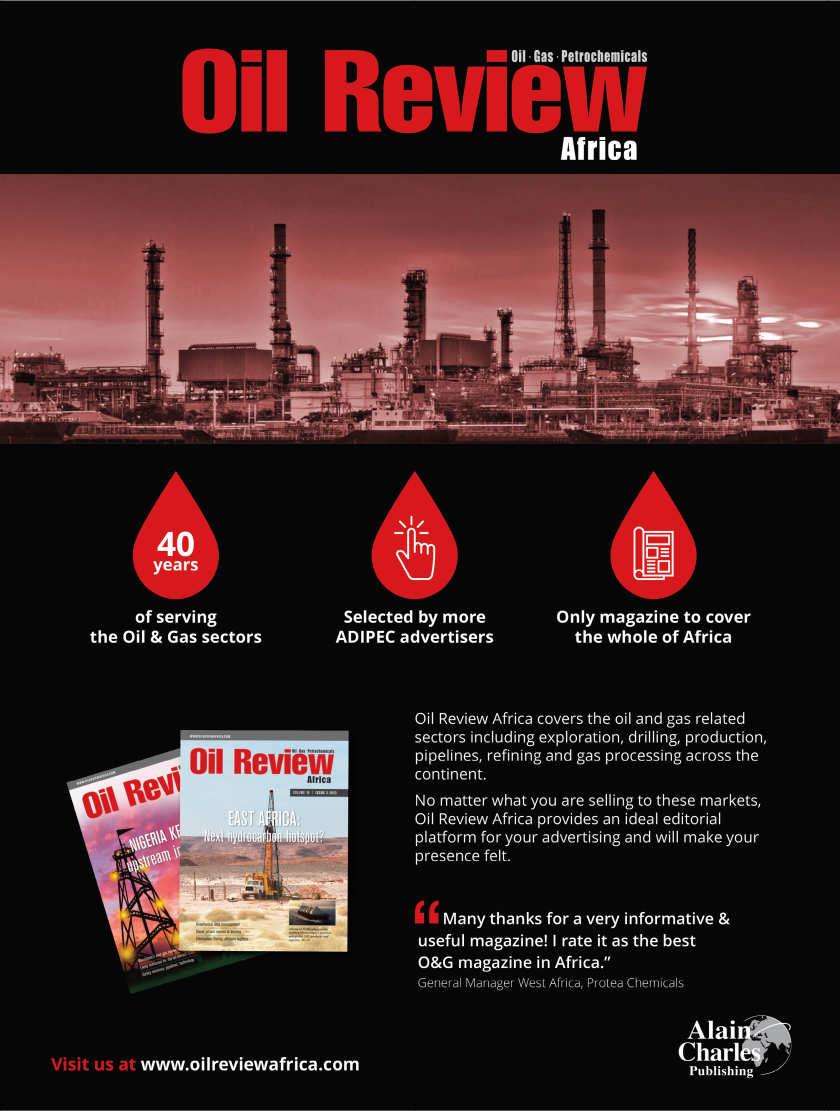









































 The opening of the AMPO ARABIA facility.
The opening of the AMPO ARABIA facility.






















































